Lika Offering Preserved Scenery, Organic Food as Main Assets of its Tourism
ZAGREB, 5 June 2022 - The Croatian mountainous region of Lika has started promoting its tourism and ecological agricultural production under the slogan "Lika je Lik" that is "Lika Cures" (in an unofficial translation) so as to highlight its main assets: the preserved scenery and organic food.
The slogan was launched during the pandemic crisis by the united local tourist boards in the City of Gospić, the Plitvička Jezera Lakes and the municipality of Udbina.
The head of Gospić's tourist board, Maja Strilić, said that the purpose of uniting the forces was to enhance the overall tourist trade.
The region can offer a lot of enjoyment in the health tourism, religious tourism as well as in sports and cultural tourism. Strilić mentions the museum dedicated to the scientist Nikola Tesla in the village of Smiljan, the Church of Croatian Martyrs in Udbina, the cave park "Grabovača" in Perušić.
There are also adrenalin adventure parks.
According to Strilić, there are more and more houses for rent that offer various amenities.
In addition, they are connected with local family-run farms that grow local vegetables and fruits.
For instance in Udbina, there are 300 family-run farms, and 90% of them produce organic agricultural produce.
Ivana Brkljačić, a former female Croatian hammer thrower who achieved good results as a teenager, winning the World Junior Championships twice and finishing 11th in the 2000 Olympic finals, plans to open a training centre for track and field athletes, in the town of Trnovac.
For more, make sure to check out our dedicated travel section.
Lika Tourism: Sights You Shouldn’t Miss on Your Way from Zagreb to Split
24 March 2022 - As the Mediterranean sun returns to its full vernal glory, summer is fast approaching, and innkeepers across Croatia are preparing for a busy tourist season. If you happen to be one of the lucky holidaymakers who've got Croatia on this year’s itinerary, pay attention because I want to share with you one of Croatia’s best-kept secrets which you should be sure not to skip on your way from Zagreb to Split.
Located directly in the path of anyone travelling from central Europe to the Dalmatian coast, Lika is a Croatian treasure that is often forgotten. A rugged land nestled in the Dinaric Alps, Lika’s geographic seclusion and small population manifests as both a blessing and a curse, leaving the region relatively untouched by the annual tourism booms that flood neighbouring areas. While this trend has preserved the local authenticity of the towns and villages that dot the valleys, coasts, and mountainsides of Croatia’s largest county, the region has also been denied many of the economic benefits that come with a thriving tourism industry.
So, as the grandchild of a Likan myself, and an avid advocate of Likan culture and natural beauty, I strongly encourage visitors to venture beyond the holy holiday trinity of Zagreb, Istria, and Dalmatia, and consider adding my ancestral lands to at least one leg of your summer adventure. I promise you wont regret it. To make planning a little easier, I have put together a list of destinations you should be sure to check out on your next Croatian getaway, even if only as a pitstop along the way from Split to Zagreb, Vienna, or Venice.
Kuterevo Bear Sanctuary
As Lika is one of Croatia’s most wild regions, it comes as no surprise that a home for orphaned brown bears would find itself at the top of this list. According to the Lika Tourism Board, approximately 800-1000 brown bears live in Croatia. Unfortunately, due to hunting and other human activities, some cubs lose their mothers before they can survive on their own. This is where Kuterevo comes in. Founded in 2002, the volunteer-run rescue center has made it their mission to protect Croatia’s brown bears. As a result of their good deeds, the sanctuary has attracted curious onlookers to the local village, a fortunate side effect for a settlement that was once unknown to the rest of the world. The sanctuary currently hosts 8 bears, 2 of which came from a zoo, while the rest were taken in as cubs from the wild. If you are interested and want to learn more, check out the website of the Lika Tourism Board here.
Memorial Center “Nikola Tesla” Smiljan
As you might be aware, Lika was the birthplace of physicist and engineer Nikola Tesla. Born in Smiljan, Tesla went on to invent the first AC motor and developed AC transmission technology, an achievement that some say changed the course of human history. Come to Smiljan to learn more about the childhood and career of this iconic world figure. The exhibit includes two parts that outline his early upbringing and science-oriented life. Both science nerds and history buffs should be sure to include this pitstop or even spend a few nights in the nearby town of Gospić. Find out more here.
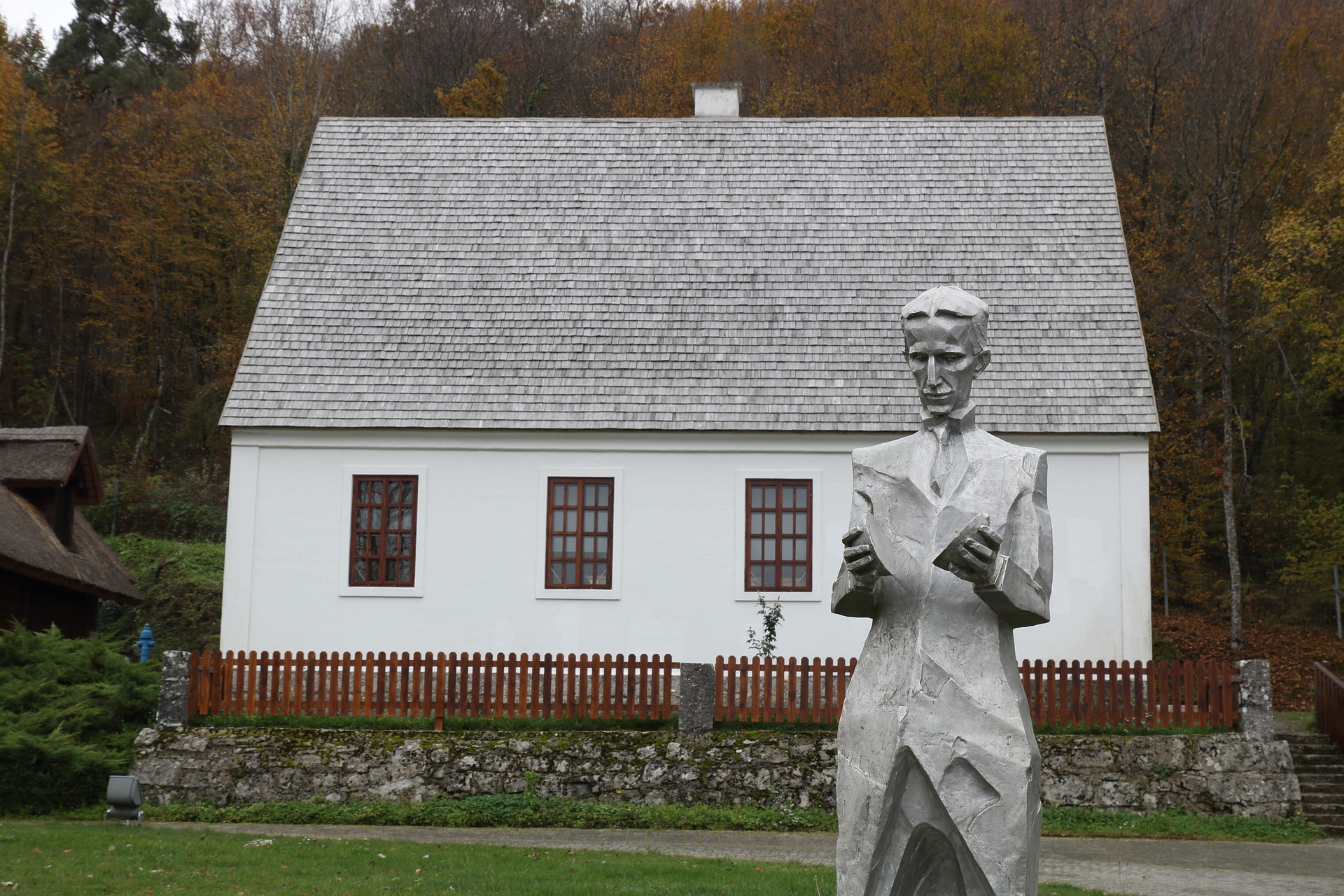
Memorial Center "Nikola Tesla" Smiljan - Pixcell
Plitvice Lakes
Probably the most well-renowned destination that Lika has to offer, Plitviče Lakes National Park is a 295 km2 forest reserve in the northeastern corner of the region. Known for its chain of 16 terraced lakes and waterfalls, this stop will bring out the inner naturalist in even the most well-established city dwellers. The park gained significant international attention in 2014 when a video of Croatian duo 2CELLOS went viral, garnering millions of views on YouTube. Even without the splendour of chordophone melodies, the natural beauty of the lakes speaks for itself, with over a million people visiting the park every year. If you want to avoid crowds, visit outside of the July-August rush. If you find yourself there during in high season, arrive early. The park opens at 7 am, and tour busses generally show up at 9 am. Most importantly, don’t make this the only stop on the Likan leg of your journey. For travellers looking to get off the beaten path, spending some time in at least one of the other options on this list will provide a more authentic and well-rounded experience.
The Croatian Littoral
If you thought Croatian maritime beauty was restricted to Dalmatia and Istria, think again. The equally magnificent Croatian Littoral lies just over the mountain from Lika’s vast woodlands. Travellers who crave the sea but shy away from crowded beaches will find Eden along this exquisite, rugged stretch of coastline. Mainly comprising the areas between Rijeka and Dalmatia, the Littoral hosts several charming seaside towns and villages with mild Mediterranean ambiance, a contrast to the more continental interior. My grandfather would recount tales of the difference in climate between his village and the coastal towns he would visit during his youth. “In my village, cold winters, but over the mountain, hot and… palm trees!” He would exclaim, testifying to the incredible variety his homeland provides.
You, too, can share in witnessing this marvel of geography. Quick day trips to the Littoral are a summer must for anyone staying in Lika. Journey to Zavratnica Bay, where you will find crystal blue waters between the steep cliffs that compose this tranquil inlet. A sunken German WWII ship can also be found here for those just as excited about diving into history as they do the ocean.
The town of Senj may also be of interest to anyone keen to embrace European history while staying dry. Stopover at Nehaj Fortress to marvel at the majesty of the stone walls that have defended the settlement as far back as 1558.
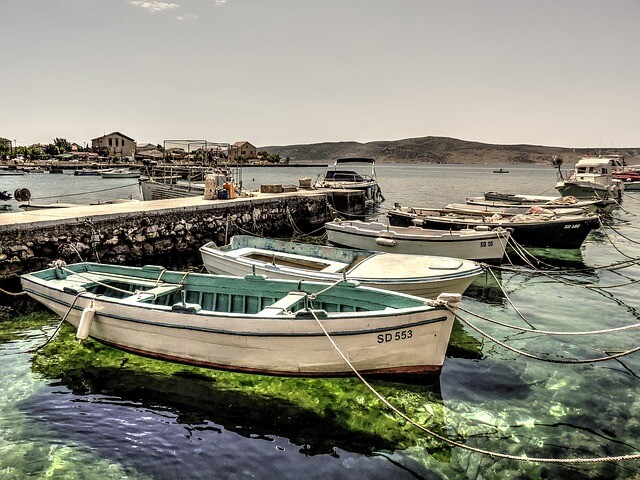
Boats in the Senj harbor - Pixabay
Gospić
The administrative center of Lika, located at the heart of the region, Gospić is an attractive destination for anyone trying to escape big crowds. Despite its modest size, the town is full of the same Southeastern European charm that invites tourists to neighbouring constituencies each year. Existing at the crossroads of empires, Gospić was initially built between two Ottoman forts, later experiencing rule under various other regimes, leaving a unique mark on the town. The proximal location of Gospic to many of Lika’s best tourist attractions makes it an ideal base from which to explore the surrounding area.
For more, check out our lifestyle section.
Tesla's Nest: Luxury Lika Resort Construction Began, As Did Problems...
January the 29th, 2022 - Tesla's Nest, a luxury Lika resort which was due to spring up in Croatia's green heart, more precisely in Lovinac, encountered issues as it was being constructed. A true Croatian tale of red tape suffered by well-known investor Goran Strok.
As Poslovni Dnevnik writes, Tesla's Nest in Lovinac was supposed to be the a luxury Lika resort owned by investor Goran Strok. Construction began almost three years ago and envisions an investment totalling 15 million euros in luxury wooden houses on an artificial lake was planned. Construction halted halfway through. The project is still hampered by financial issues, but also by a problem that was far from actually expected, according to a report by HRT.
The biggest problem of this colossal tourist investment in Lika's potentially excellent elite tourism sector was the artificial lake that was losing water. Several project changes have sucked up millions, the end is still far away, but the people of Lovinac aren't losing hope for this luxury Lika resort.
''If everything was done properly, I don't know if there would be anything better than that anywhere in Europe,'' pointed out Vojo from Lovinac.
''We and our children would have a place to work and that would mean a lot to us,'' added Ankica, also from Lovinac.
This luxury Lika tourism project envisages seventy larger and smaller villas with two restaurants, all of which would be maximally sustainable and powered by green energy. Seventy employees, mostly local people, would find work there, but everything got stuck in the complex process of closing the new financial structure.
''Unfortunately, we've approached the figure of 25 million euros and now those five million pose a problem. I think that HBOR has lost its appetite with us,'' said investor Goran Strok. Regarding the potential of this project, but also to help complete it, Strok addressed the Lika-Senj County Prefect.
''Of course, we still stand behind that project and we think it should be realised in this area, we'll become lobbyists for every positive investor,'' Prefect Ernest Petry stated.
If HBOR will not stand by the investor, it doesn't mean Strok or his luxury Lika tourism project which would revitalise this shamefully overlooked and abandoned but gorgeous part of the country will be shelved.
''I've never lost in my life, neither in sports, nor in business, nor during my 40 years spent in England, I've been married for 53 years, I'll push this project through, even if I die doin it,'' claimed a doggedly determined Goran Strok.
He did however point out that this is one of the most difficult projects in his career in which he started eighteen hotel houses, but he believes that by the end of the year, if all of the funds are raised, everything should be built as planned.
For more, check out our business section.
Discovering Authentic Croatia's Secrets With Seoski Tourism
November 4, 2021 – Village tourism or countryside tourism - Seoski tourism in Croatia - offers authentic, traditional experiences. Aleksandra Kuratko, secretary of Udruga ruralnog turizma Hrvatske (Croatian Rural Tourism Association) tells us more about it, and their work to help facilitate it
Croatia's visitor offer is evolving and expanding. There are exciting aspects of authentic Croatia to be discovered. Away from the beach, villages inland often look remarkably similar to how they did one hundred years ago. There, crops are grown and produce made in ways passed down through generations of families. And, in some lucky instances, these family farmers are willing to open their doors, invite you inside and show you how they live.
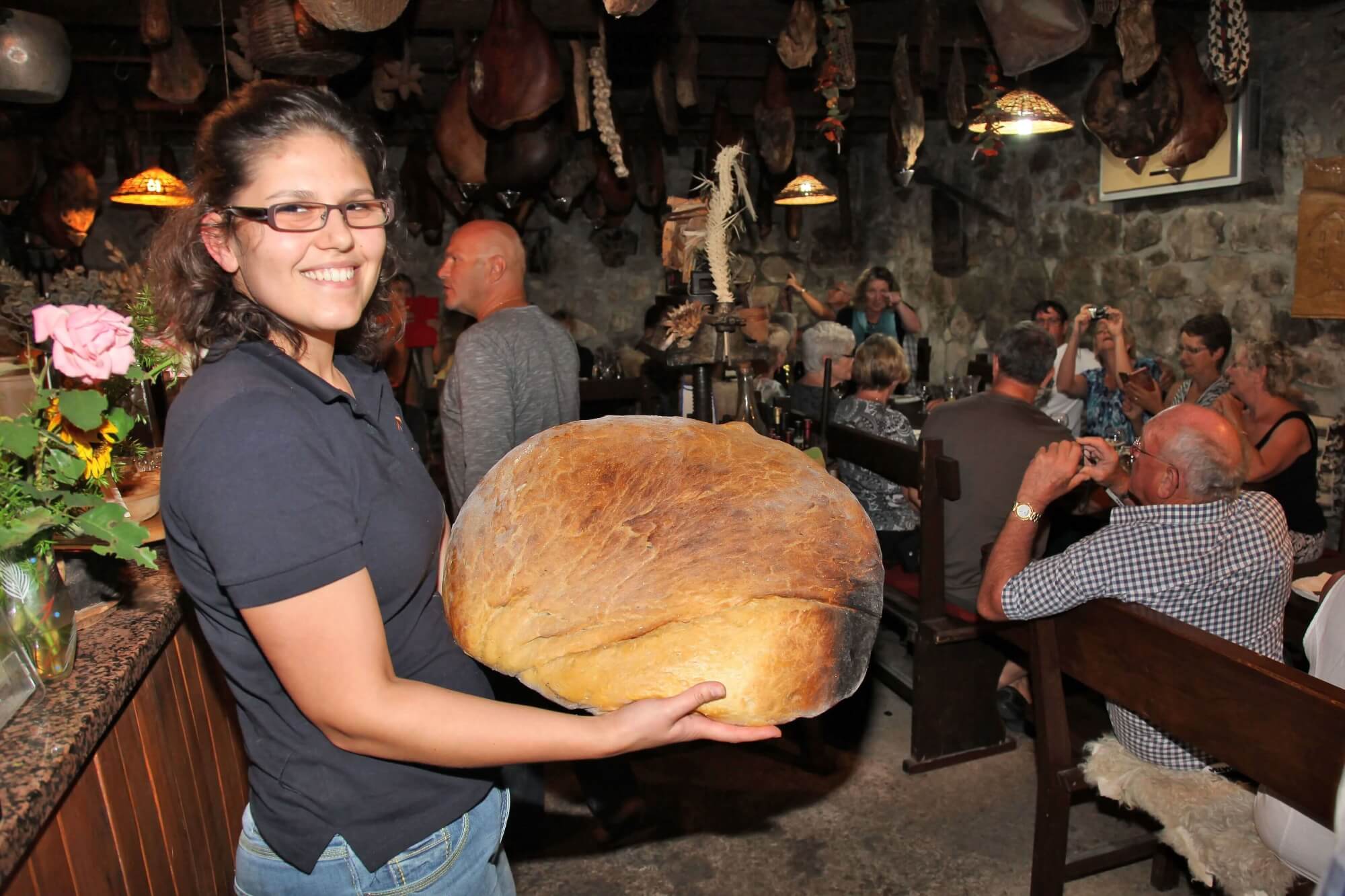 Bread from the peka at Agroturizam Antunović on Pelješac
Bread from the peka at Agroturizam Antunović on Pelješac
Seoski Tourism – translated as either village tourism or countryside tourism – is just that. Family farms that offer hospitality. These are some of the most homely and most welcoming accommodation experiences you can have in Croatia. Offering sights and sounds, tastes and flavours that you can't find anywhere else, visits or stays in Seoski Tourism places have long been loved by locals for weekend breaks or holidays outside peak summer. But, increasingly, these authentic Croatia experiences are being discovered by international visitors.
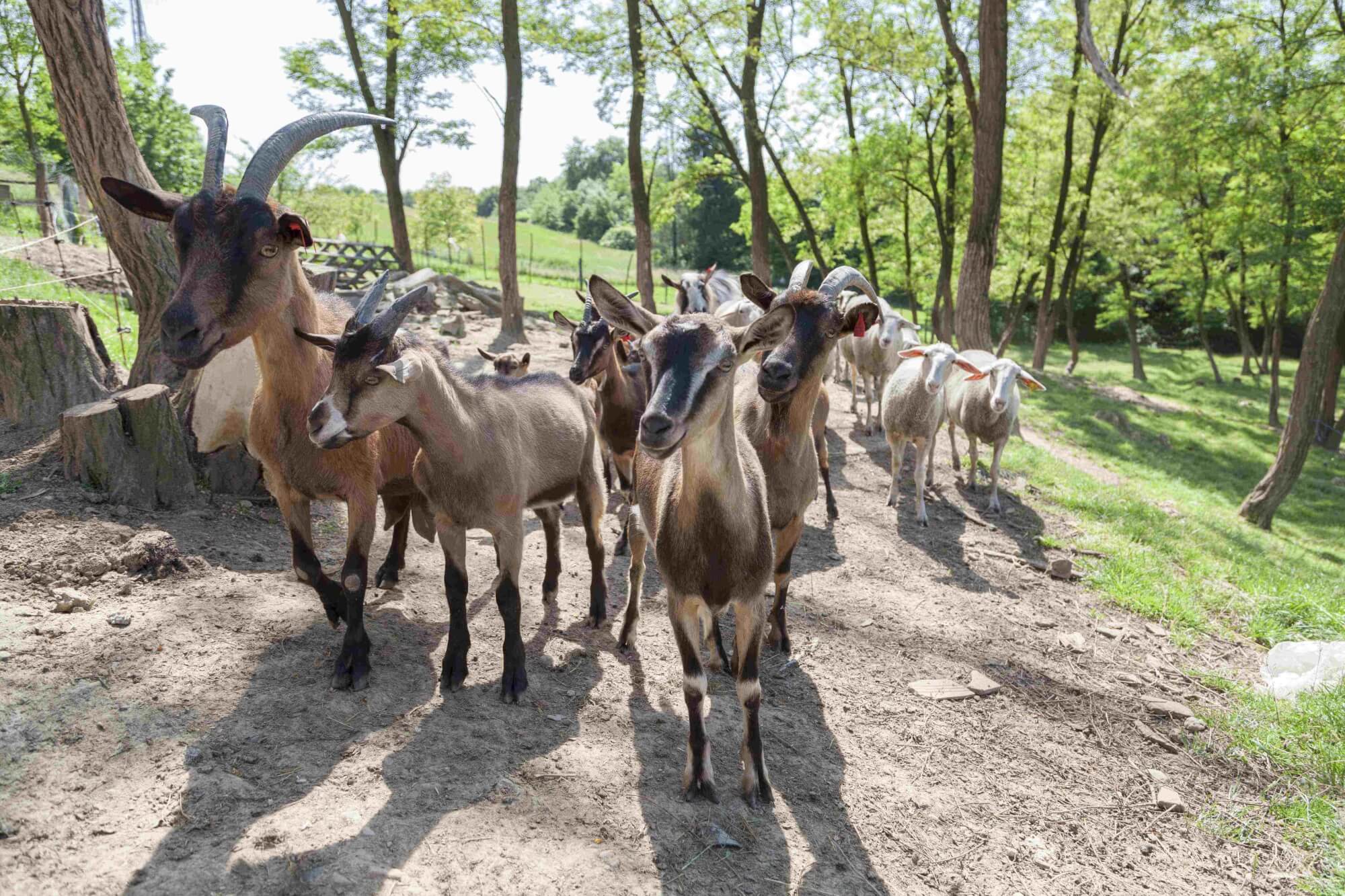 Moslavina goats at Kezele family farm © Davor Konjikušić
Moslavina goats at Kezele family farm © Davor Konjikušić
One institution trying to facilitate the growth in interest is Udruga ruralnog turizma Hrvatske - Croatian Rural Tourism Association. Since it was formed in 2016, they have tried to bring together Croatia's family farm hosts, to promote them and educate them, and to build bridges between these independents and tourist boards, tourist agencies, educators and even the wider world outside Croatia.
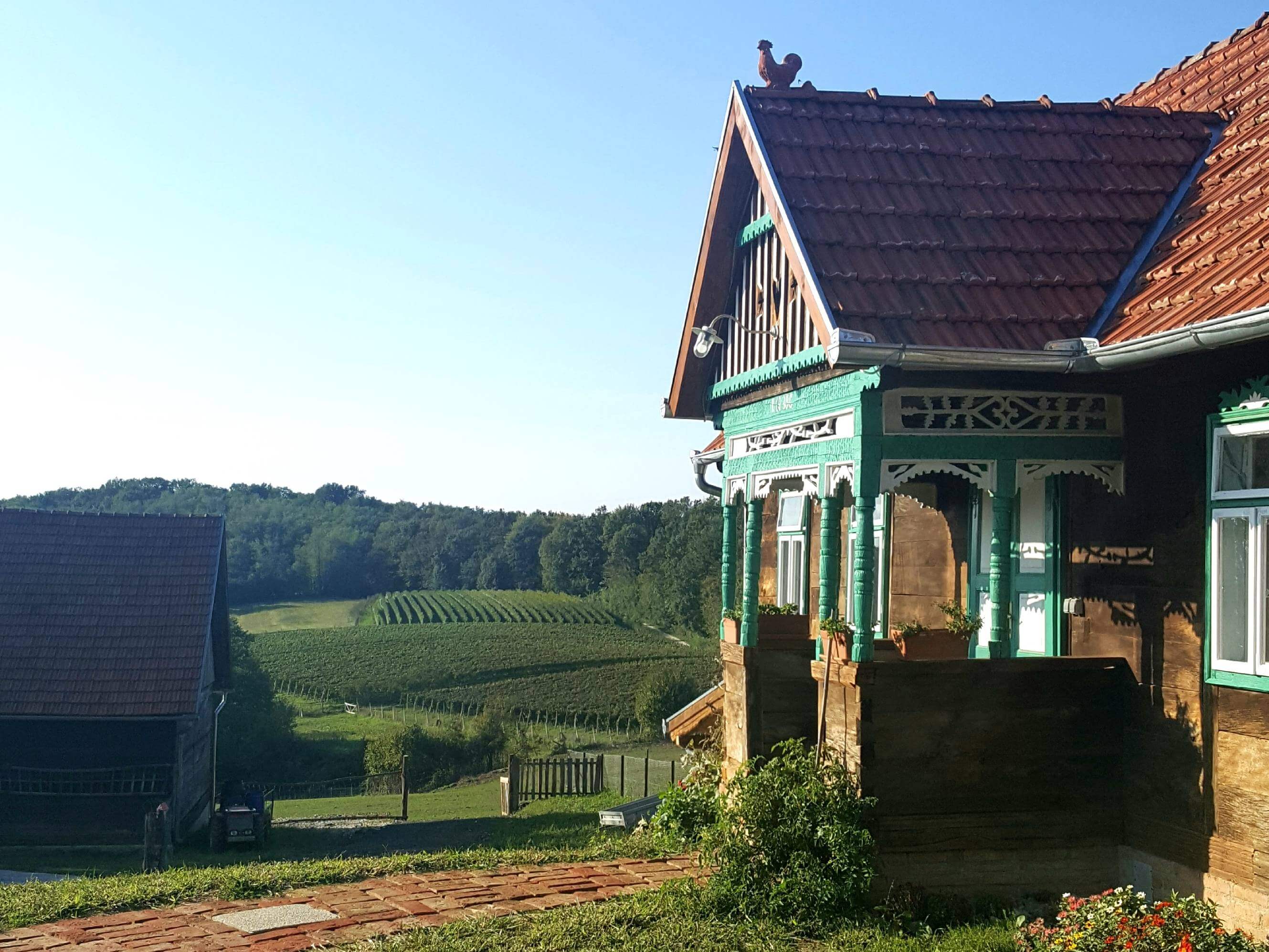 Seoski turizam Kezele in Šumećani, on the border of Zagreb County and Bjelovar Bilogora County © Davor Konjikušić
Seoski turizam Kezele in Šumećani, on the border of Zagreb County and Bjelovar Bilogora County © Davor Konjikušić
Based in Ivanić-Grad, Zagreb County, the Croatian Rural Tourism Association is currently touring the length and breadth of the country, holding workshops with as many Seoski Tourism family farms that will come. And if the farmwork doesn't allow them free time, then they can attend Croatian Rural Tourism Association workshops online.
On the eve of the association's online Seoski Tourism workshops for Central Croatia and Slavonia, TCN interviewed Aleksandra Kuratko, secretary of Udruga ruralnog turizma Hrvatske, to find out more about Seoski Tourism in Croatia.
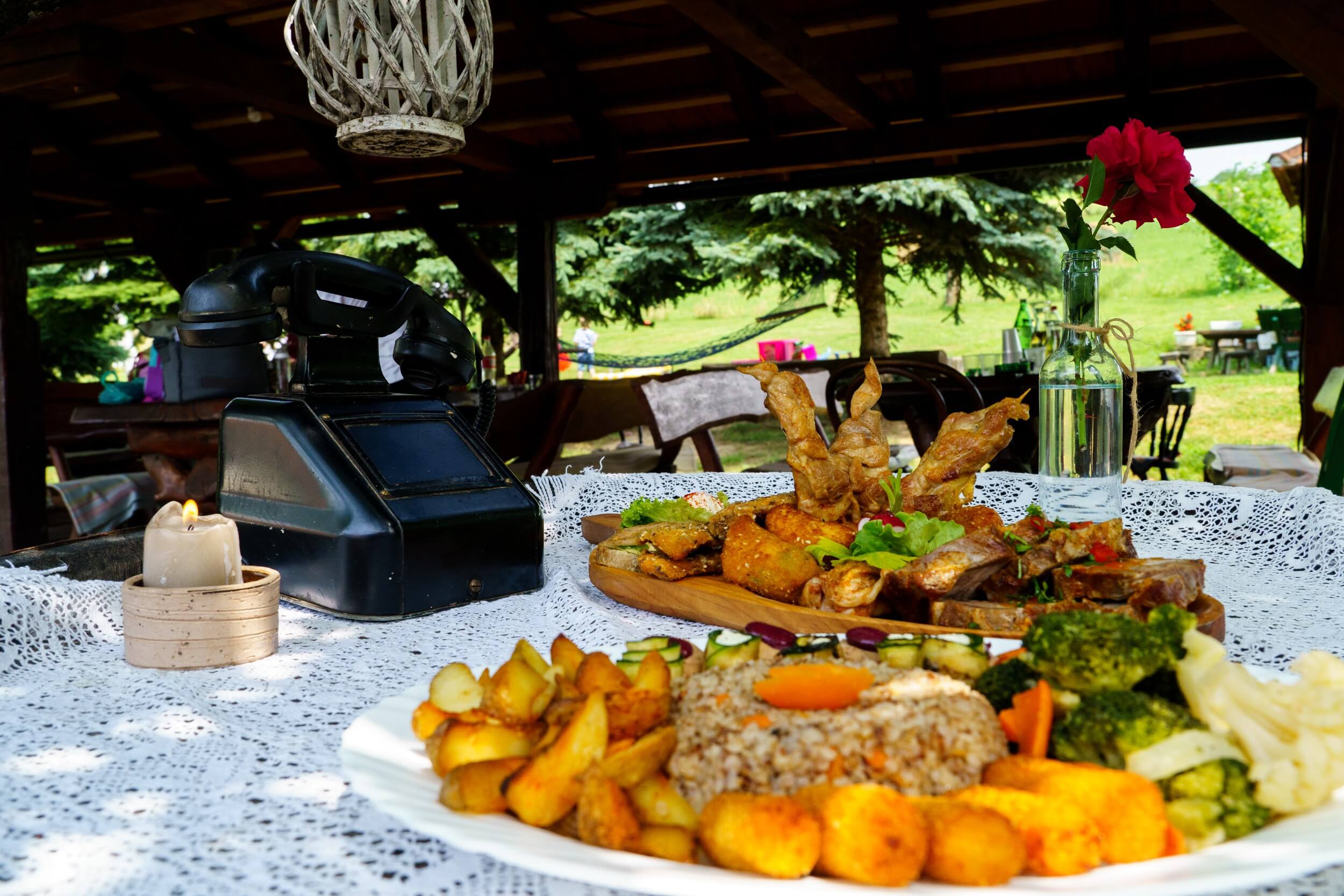 Prigorje specialties at Rakić family farm
Prigorje specialties at Rakić family farm
My name is Aleksandra Kuratko and I am secretary of Udruga ruralnog turizma Hrvatske. As an association, we are 5 years old.
We have 35 members, most of whom are service providers in what we call Seoski Tourism. We also have several tourist boards and two educational institutions as members.
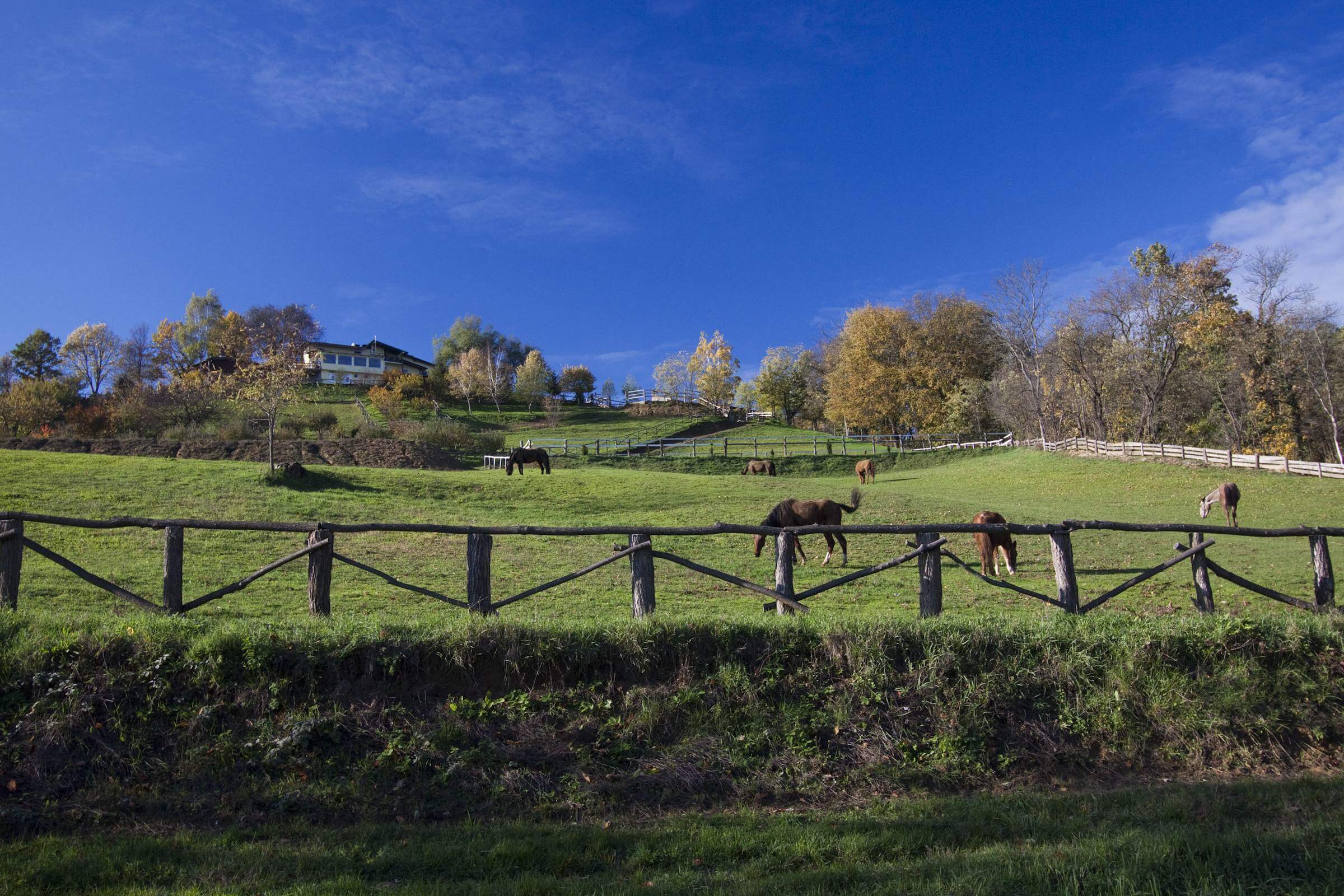 Bilogora horses in autumn at Agroturizam Na malenom brijegu © Vladimir Vlajinić
Bilogora horses in autumn at Agroturizam Na malenom brijegu © Vladimir Vlajinić
Seoski tourism is not quite the same as rural tourism, because rural tourism is many different types of tourism that happen in rural areas. Seoski tourism - which you might translate as village tourism - is quite specific. We assemble people who work in agriculture and who, at the same time, are also offering hospitality. In English, you might call them Farm Stays. Or Agro-tourism – a merging of agriculture and tourism.
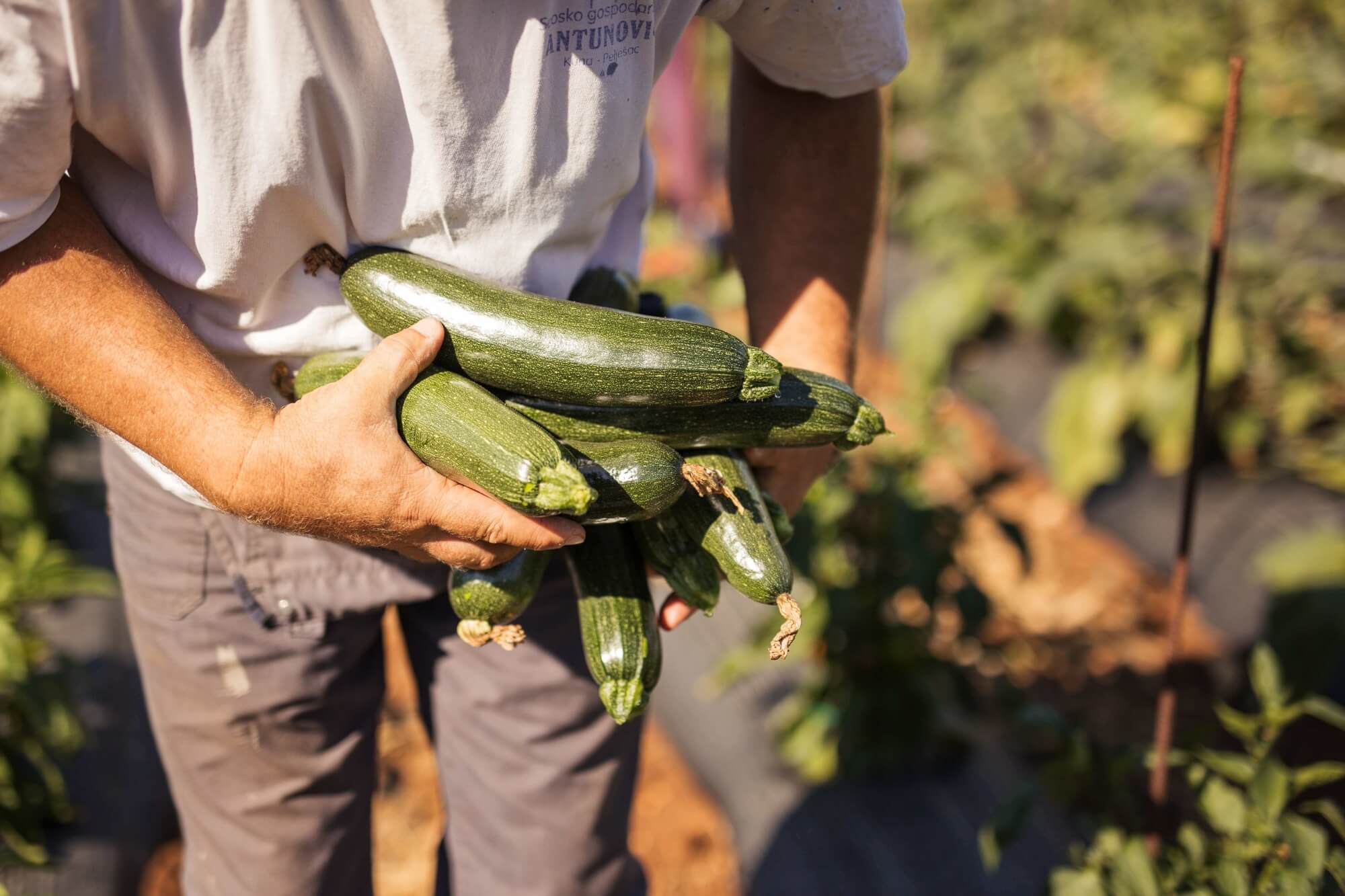 Fresh vegetables at Agroturizam Antunović on Pelješac
Fresh vegetables at Agroturizam Antunović on Pelješac
People who work on agricultural estates often take care of local cultural heritage. For example, they might maintain and renew traditional wooden or stone houses. Many also have etno collections, in which they preserve different objects from their region. Some of these objects might have been used in agriculture and households hundreds of years ago. So, they are preserving the cultural heritage of Croatian villages. This is what we call material cultural heritage. But, there's another kind.
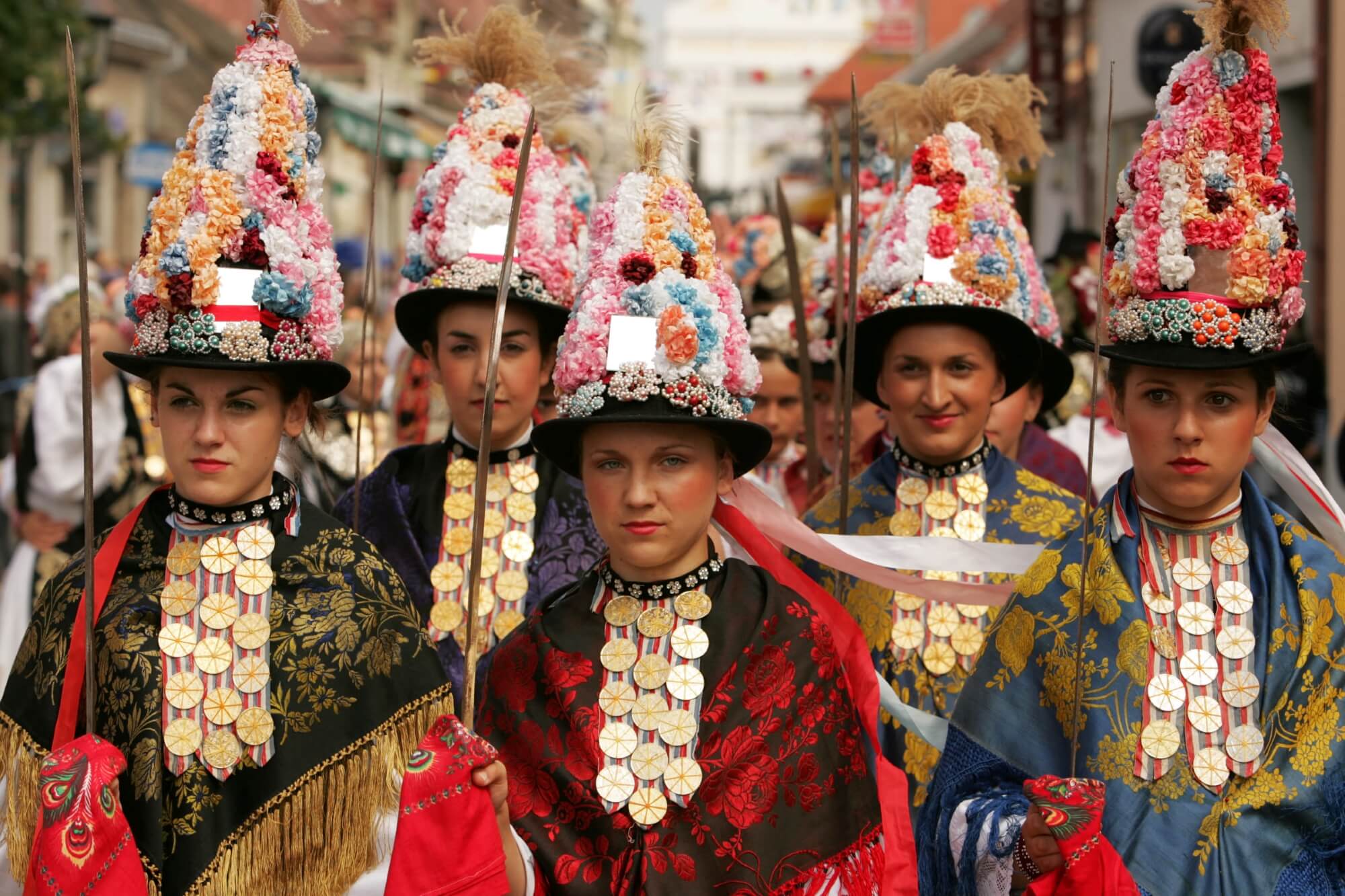 Cultural heritage preserved in one Slavonian village © Mario Romulić
Cultural heritage preserved in one Slavonian village © Mario Romulić
Non-material cultural heritage is also a part. That might be preserving old recipes of traditional, regionally-specific dishes. Or, it might be showcasing the songs and dance of local music.
We are currently running a project which is supported by the Croatian Ministry of Tourism and Sports in which we hold 37 Seoski Tourism workshops in the field all over Croatia. There will also be around 15 online workshops. The workshops are aimed at colleagues who currently operate in Seoski Tourism – they work in agriculture and offer hospitality. Also invited are local tourist boards and local action groups.
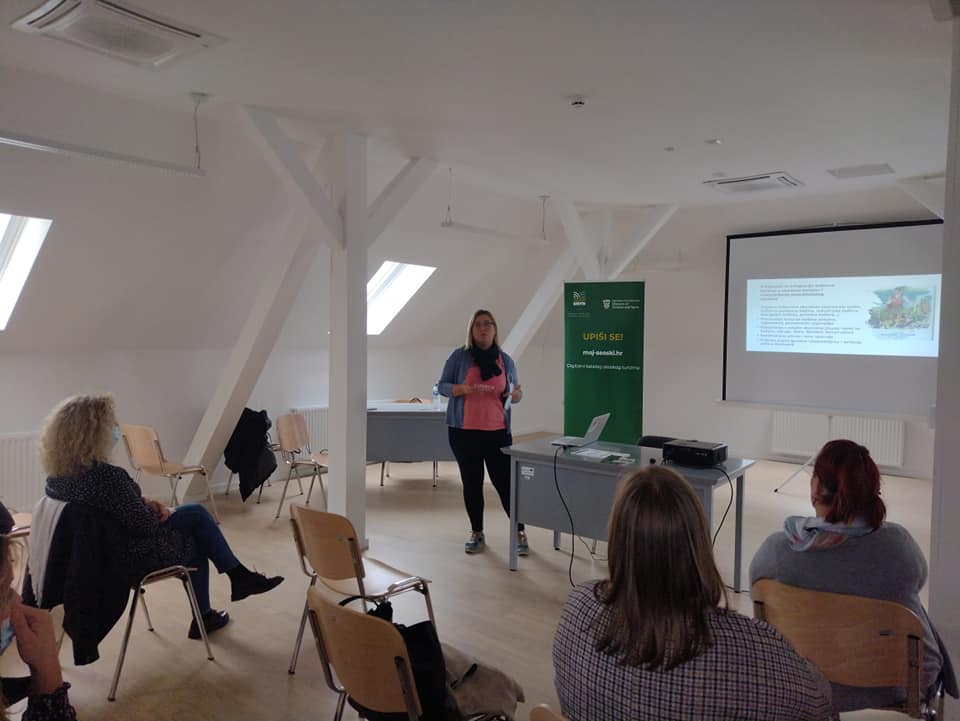 Photo from URTH workshop in Slatina
Photo from URTH workshop in Slatina
So far, we conducted 20 workshops in the regions of Central Croatia, Slavonia and Baranja, and Podunavlje. From next week until the end of the year, we will conduct the workshops in Istria, Kvarner, Lika and Dalmatia. Some service providers were not able to attend earlier workshops, because of work commitments of Covid. So, we decided to also offer access to the workshops online. Tomorrow is our first online workshop for Central Croatia and on Friday it's the online workshop for Slavonia.
These workshops are interactive discussions between our association, service providers and all other stakeholders. We discuss the legislative framework, which can be extremely complex. We talk about new trends in tourism for the post-pandemic era. We also discuss the importance of integrating cultural heritage in digital promotion.
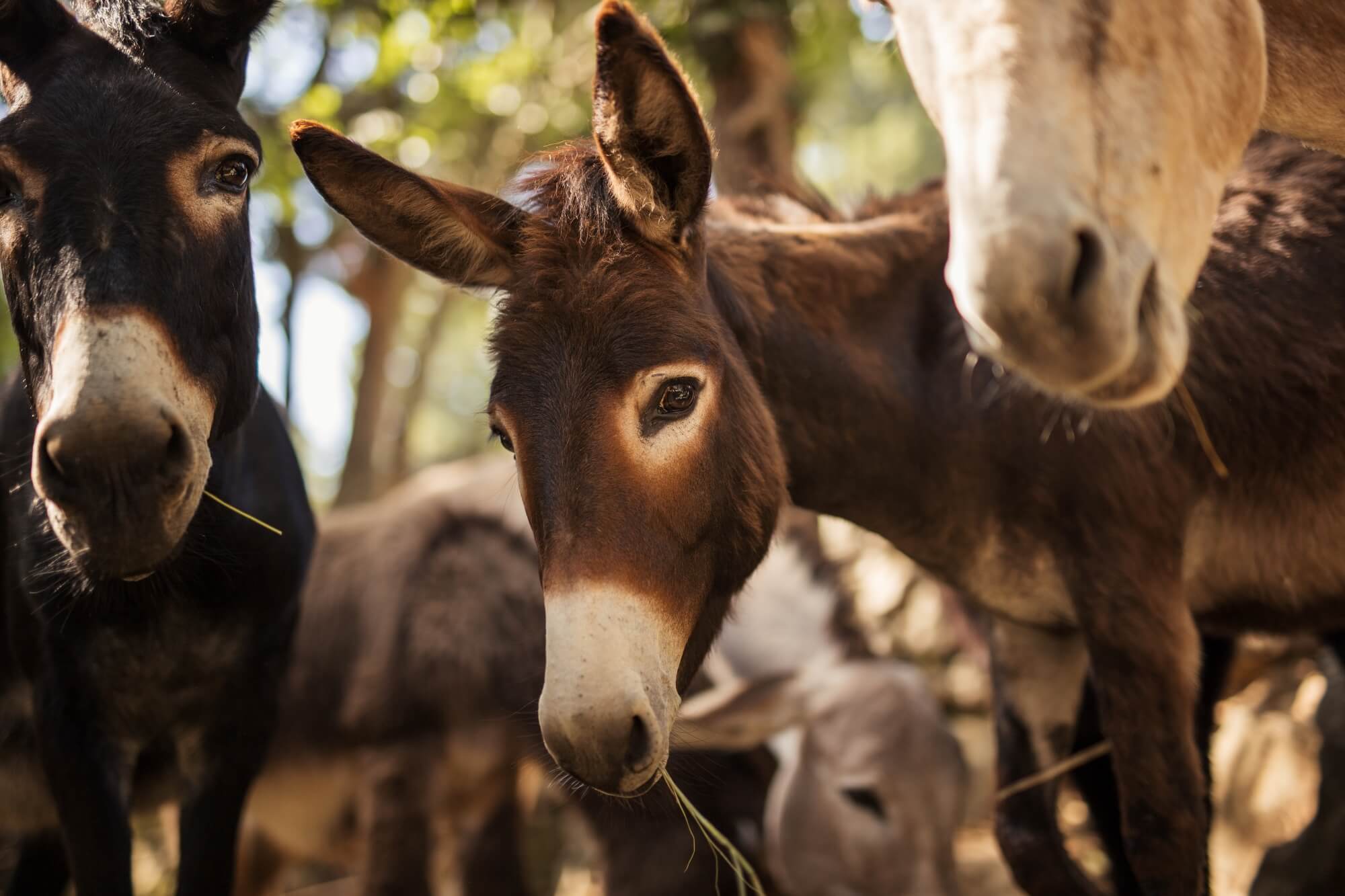 Donkey farm at Agroturizam Antunović on Pelješac
Donkey farm at Agroturizam Antunović on Pelješac
For the legislative framework, we have initiated the formation of a working group for the development of Seoski Tourism, which is now operating in the Croatian Ministry of Tourism and Sports. So, at the workshops, we ask if anyone is having issues. We collect the responses and address them in the working group.
Part of the workshop is the presentation of a new web application of Seoski Tourism, which we have developed with Croatian Ministry of Tourism and Sports. It has two purposes. One is to create a digital catalogue of Croatian Seoski Tourism. You can see region by region some of the Seoski Tourism options – currently around 40, those who have already enrolled.
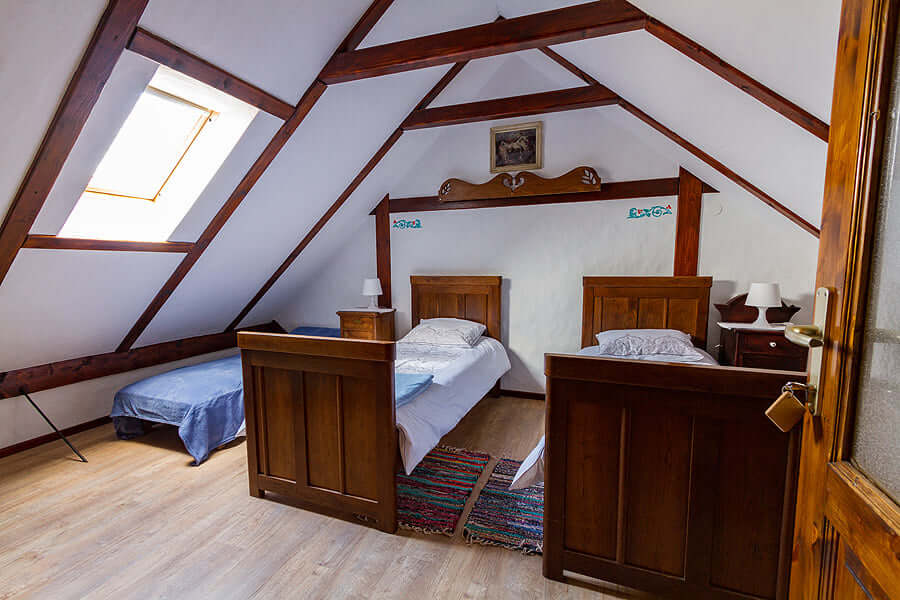 Podravina Etno rooms at Zlatni klas Otrovanec
Podravina Etno rooms at Zlatni klas Otrovanec
A version of the app is currently available on the website of the National Tourist Board. But, they are building a new website. The forthcoming version of the catalogue will likely be more user-friendly with many more functions and options. On the new website, Croatia's Seoski Tourism options will be detailed in many different languages. It should be a great resource not only for tourists but for travel agencies, journalists like you and for educational institutions. That's the reason we are devoting time in our workshops to encourage Seoski Tourism providers to enroll. We are just at the beginning of the process.
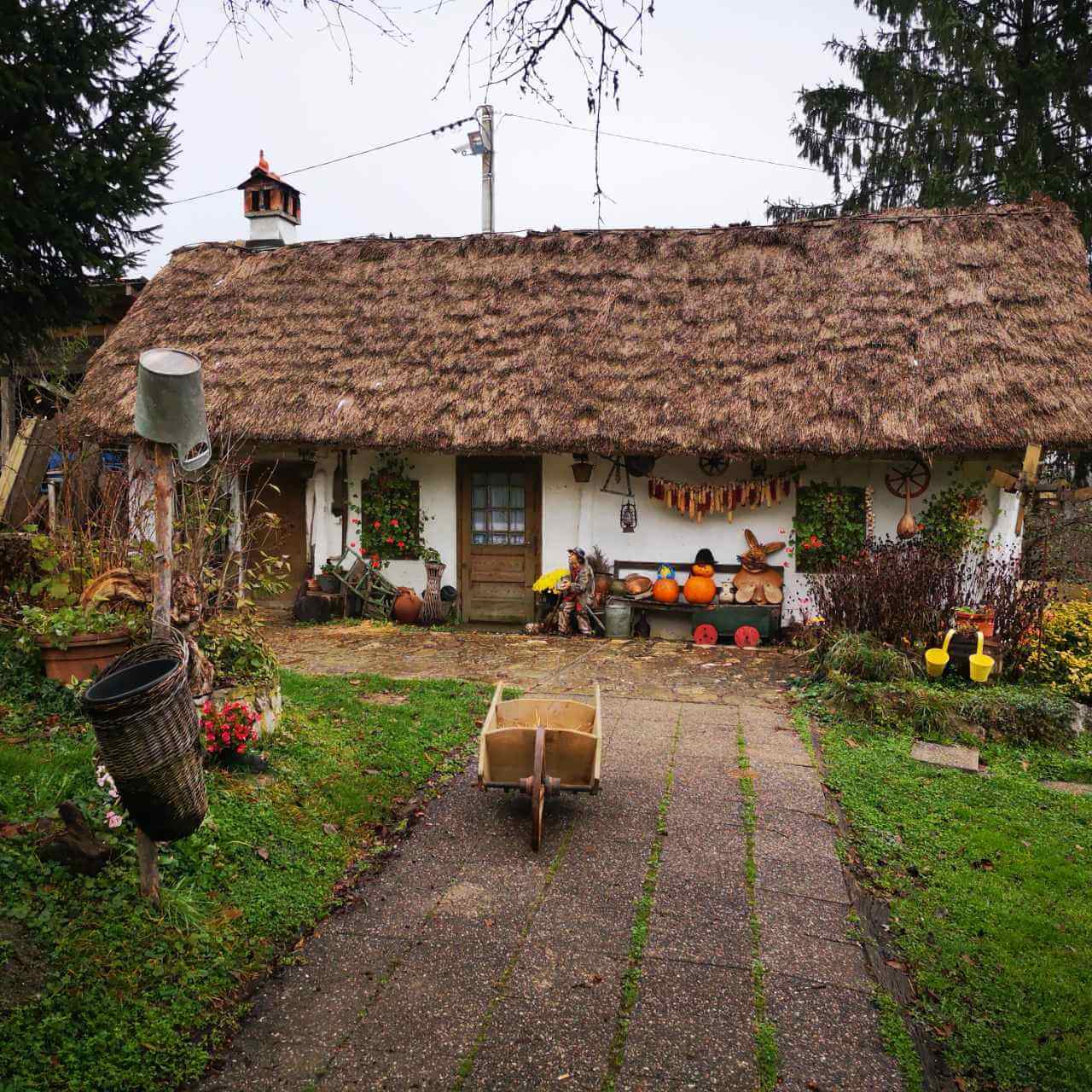 Grešna pilnica in Zagorje © Jasna Podboj
Grešna pilnica in Zagorje © Jasna Podboj
The second purpose of the app is to collect information about the service providers. This info will be used by our working group when defining a Croatian model of Seoski Tourism. So far, we have taken examples from Slovenia, Italy and other countries that are successful with Seoski Tourism. But, these models were entered into our legislative system without fully considering our distinct business and cultural environments. That is now about to change.
We are very happy that, following many years of partially successful advocacy, there is now political will at a ministerial level to really shape things up, to change the laws and regulations in order to facilitate Seoski Tourism. We want to encourage more Seoski Tourism, not to have people from agriculture being turned away because of the difficulty of the process and bureaucracy.
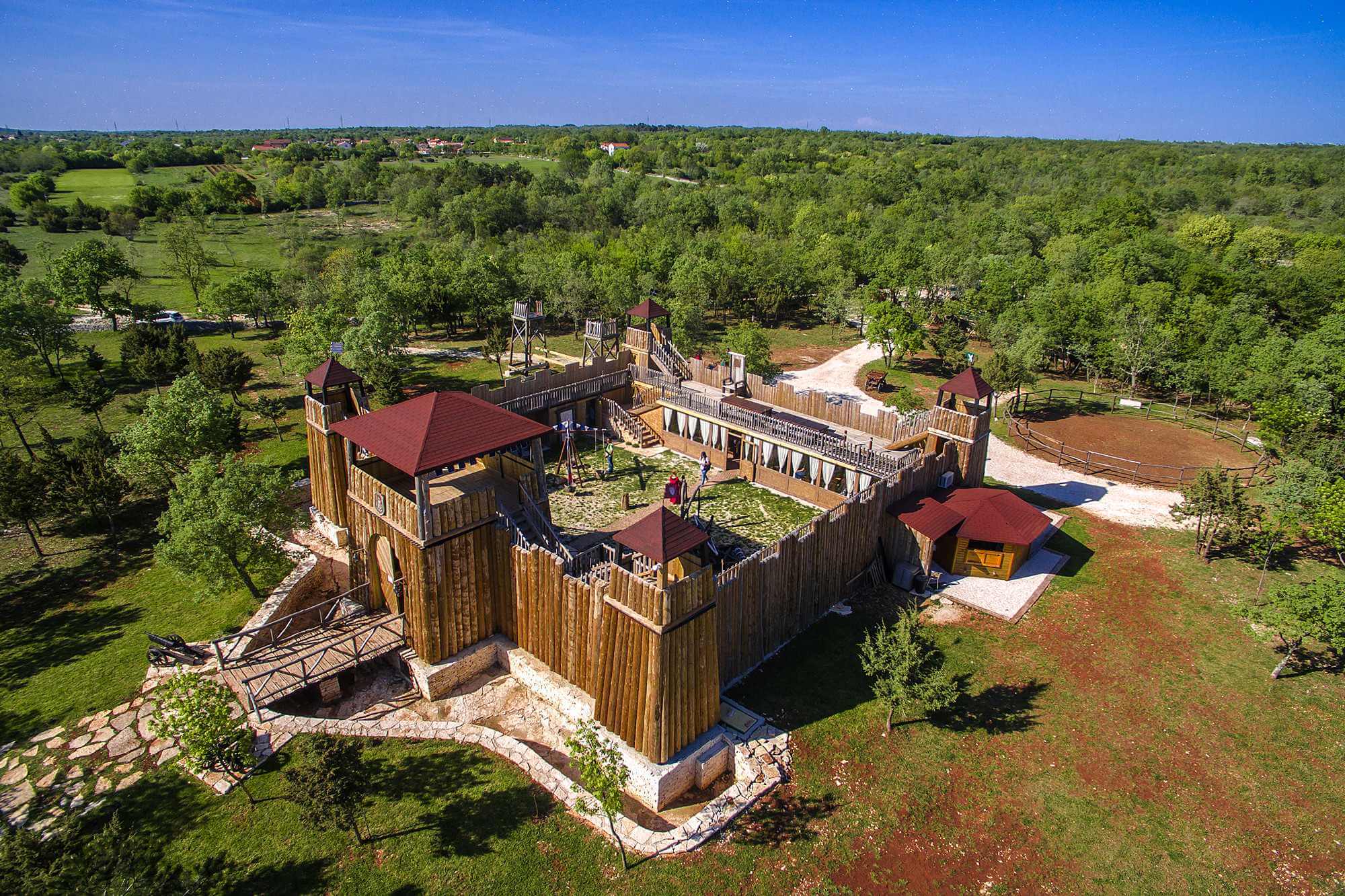 Medieval Theme Park San Michael © Silvia Otočan
Medieval Theme Park San Michael © Silvia Otočan
You said part of the workshops will focus on new trends. What are some of these?
Research has been done by a working group that is developing a new tourism strategy for Croatia. It's called Strategy for Sustainable Tourism to 2030. Under the auspices of this group, a number of research fields have been analysed.
The collected data shows that a huge percentage of tourists are now more inclined to eat locally grown and healthy food. They want to spend their time on estates that are run in accordance with ecological principles. So, they really care about issues like how waste is disposed of etc. They also pay a lot of attention to culture. They are curious to learn exactly how we are living, how we are working and how we produce things. They want to learn about our society and culture. And, importantly, they really care about how they spend their money. Above all, they want to spend money in areas that can help support local communities.
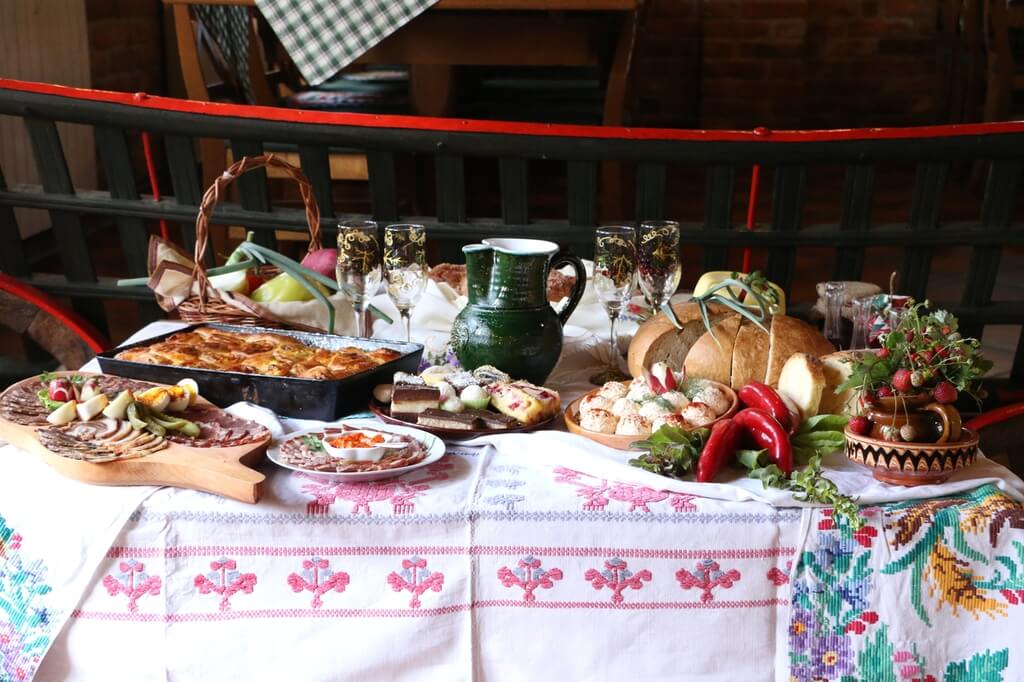 Prigorje Breakfast at Rakić Family Farm
Prigorje Breakfast at Rakić Family Farm
For us, this is really important. Because Seoski Tourism answers these demands to an incredibly high level. We do produce local, healthy food. Not only on the agricultural estates where you can experience Seoski Tourism, but also from their neighbours who just do agriculture. We are concerned with ecology, we protect cultural heritage and the money spent in Seoski Tourism stays in local communities, where it has very beneficial effects.
In the digital promotion part of the workshops we are trying to persuade people about the importance of their online presence. Basically, these days, if you're not online, it's almost like you don't exist. So, we try to explain the importance of having good-quality photos, short videos and a regular online presence.
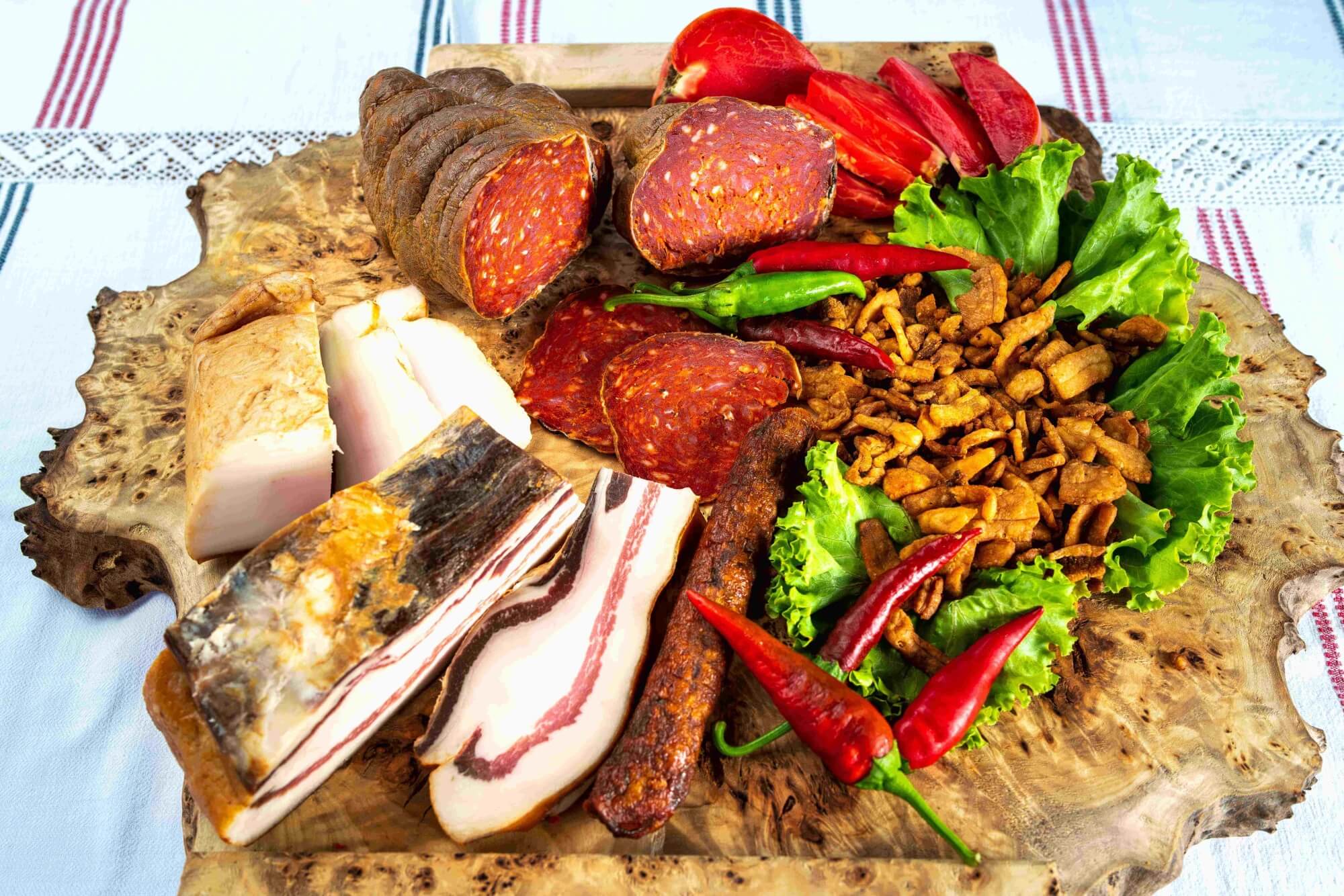 Kulen, čvarci and other specialties at Baranjska kuća © Denis Despot
Kulen, čvarci and other specialties at Baranjska kuća © Denis Despot
That's interesting. In some cases, it might be like two different worlds colliding - people who work in a traditional industry and a traditional environment having to adapt to a very modern way of operating. There's also another potential collision when providers learn of the expectations within modern tourism. Because these people can no longer just work in agriculture. To operate in Seoski Tourism, you're also very much expected to also be a host.
Yes. All of our current service providers who are successful within Seoski Tourism are also great hosts. It's essential. You can see it in almost all of the reviews for this kind of tourism. Guests come for the food and drinks and surroundings, yes. But, what they value the most, what they remember the most, is the host part of the experience. On the estates of Croatian Seoski Tourism, guests are welcomed like family. Across all of Croatian tourism we are expected to be good hosts. It's part of our reputation and the reason why many people come here from all over the world. In Seoski Tourism, it is vital we live up to those expectations.
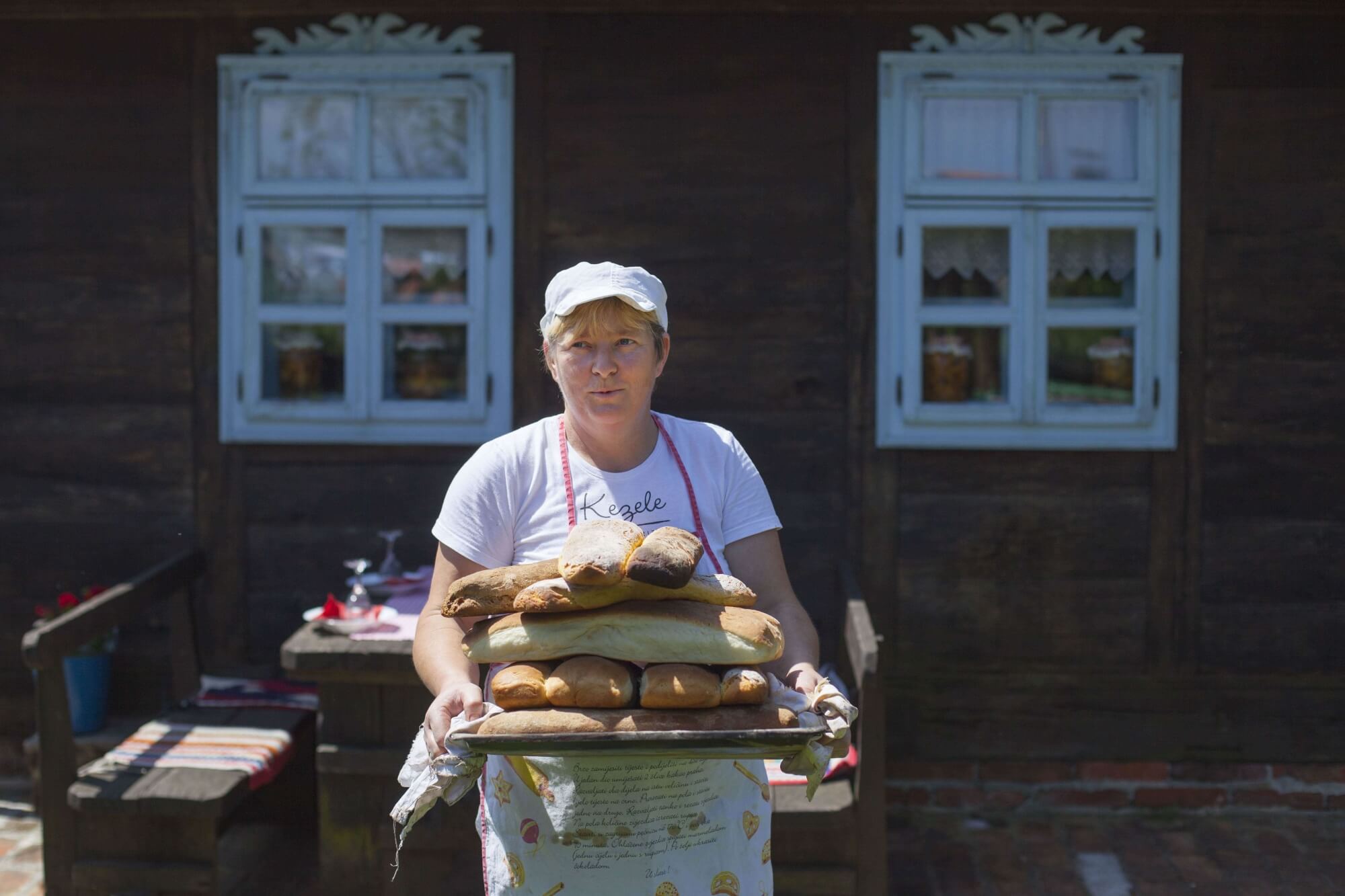 Kezele family farm © Davor Konjikušić
Kezele family farm © Davor Konjikušić
Another aspect of this, which is a more recently-observed element, is that visitors often want an insight into the actual lives, even the personalities of their hosts. They want not only to taste the homemade sausages you make, but they also want to know how you do it, where you do it, how you learned to do that. When they go to Spain, they want to know how the people there make their wine. And, when they come to Croatia, they want to learn how we do it here.
So, all in all, those of us in Seoski Tourism are really busy. We are in agriculture, yes, but we are also in tourism and we are also online. With this more recently-observed aspect, we will need to try and devote even more time to our hosting. It can be difficult to balance the demands on your time. But, in our workshops, we are trying to persuade people to talk more about themselves, their lives, their cultural heritage. And, if there isn't time to do everything themselves, then to involve different and often younger generations of the family. Sometimes within the hosting or alternatively just with the online promotion and presence.
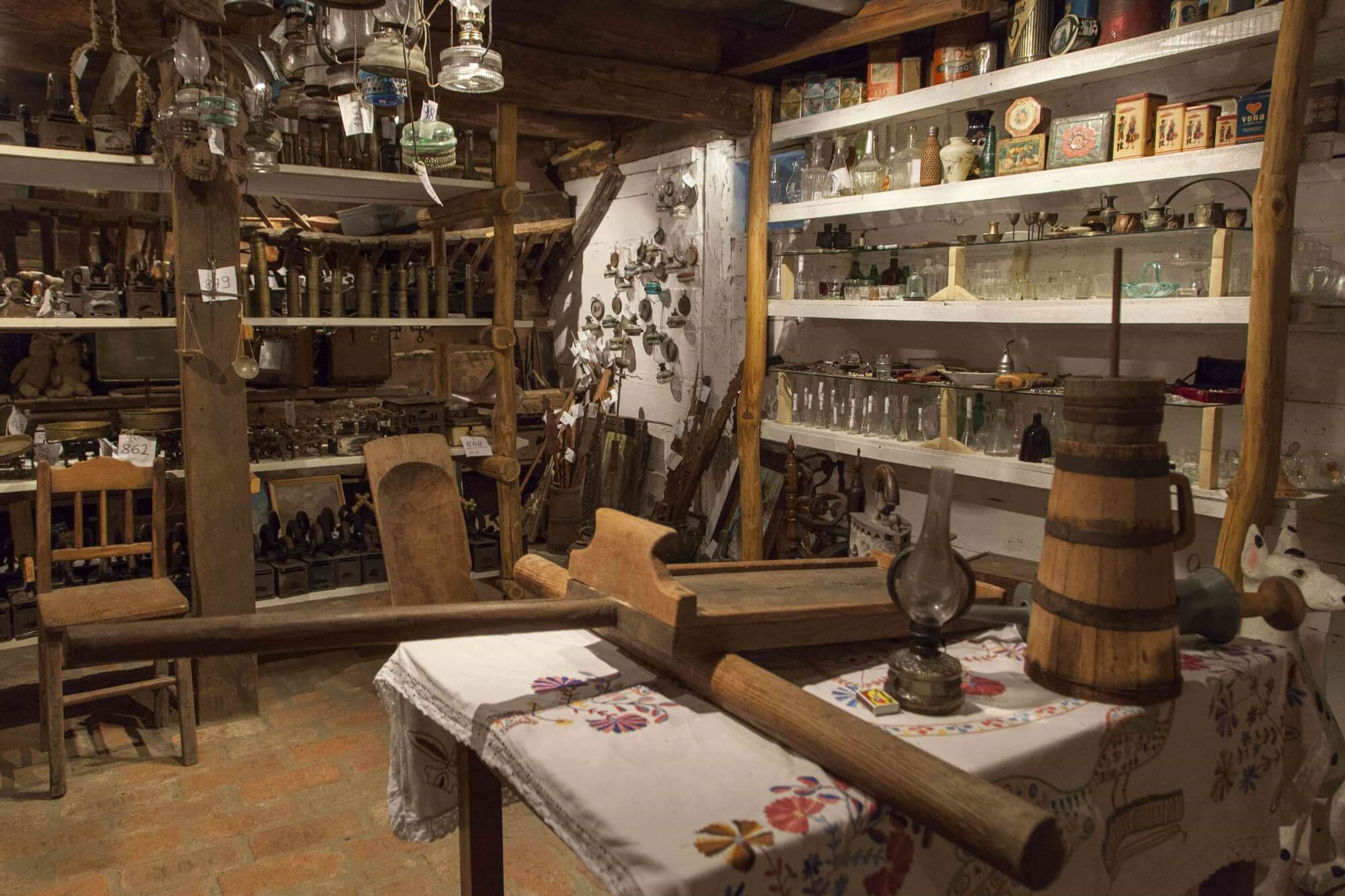 Kezele family farm ethno collection © Davor Konjikušić
Kezele family farm ethno collection © Davor Konjikušić
I've visited some family farms that were right at the start of their journey with Seoski Tourism and they seemed surprised that I was at all interested in what they do and how they do it. I think maybe they thought I was a bit crazy.
Yes, that is a response we sometimes also see at first. I think it's because our generation takes a lot of things for granted. We sometimes think that what we do is just what we do. We are not so good at showcasing it. “Why would I show someone how I make my cheese? I make my cheese like my grandmother used to make it” But, for those who open their doors to Seoski Tourism, inquiries about how they do what they do are only increasing. So, they seem to appreciate how we advise them in the workshops.
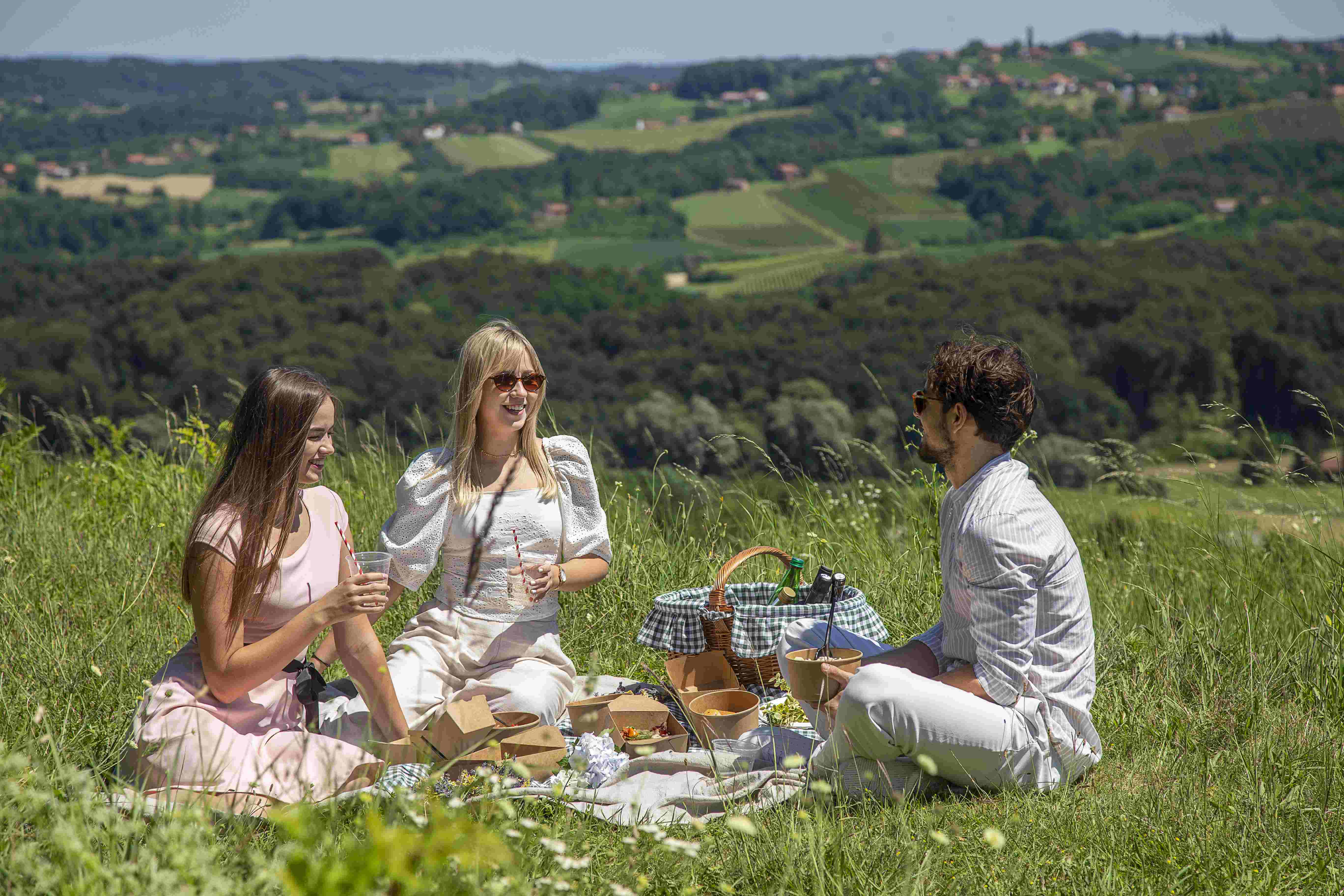 Picnic by Restaurant Međimurski dvori © Igor Nobilo
Picnic by Restaurant Međimurski dvori © Igor Nobilo
We are trying to let our producers know that Seoski Tourism is not just a platform to sell their produce and an overnight stay, but it's a full experience they can sell. There are agricultural farms in Austria that are established in tourism that you must pay only to visit. Of course, that doesn't happen currently anywhere in Croatia, even though some of our Seoski Tourism estates have sections that look like museums.
Some of these aspects are very new. And the feedback is great. I truly believe there are hidden treasures to be discovered in some Croatian villages. We are here to tell that story.
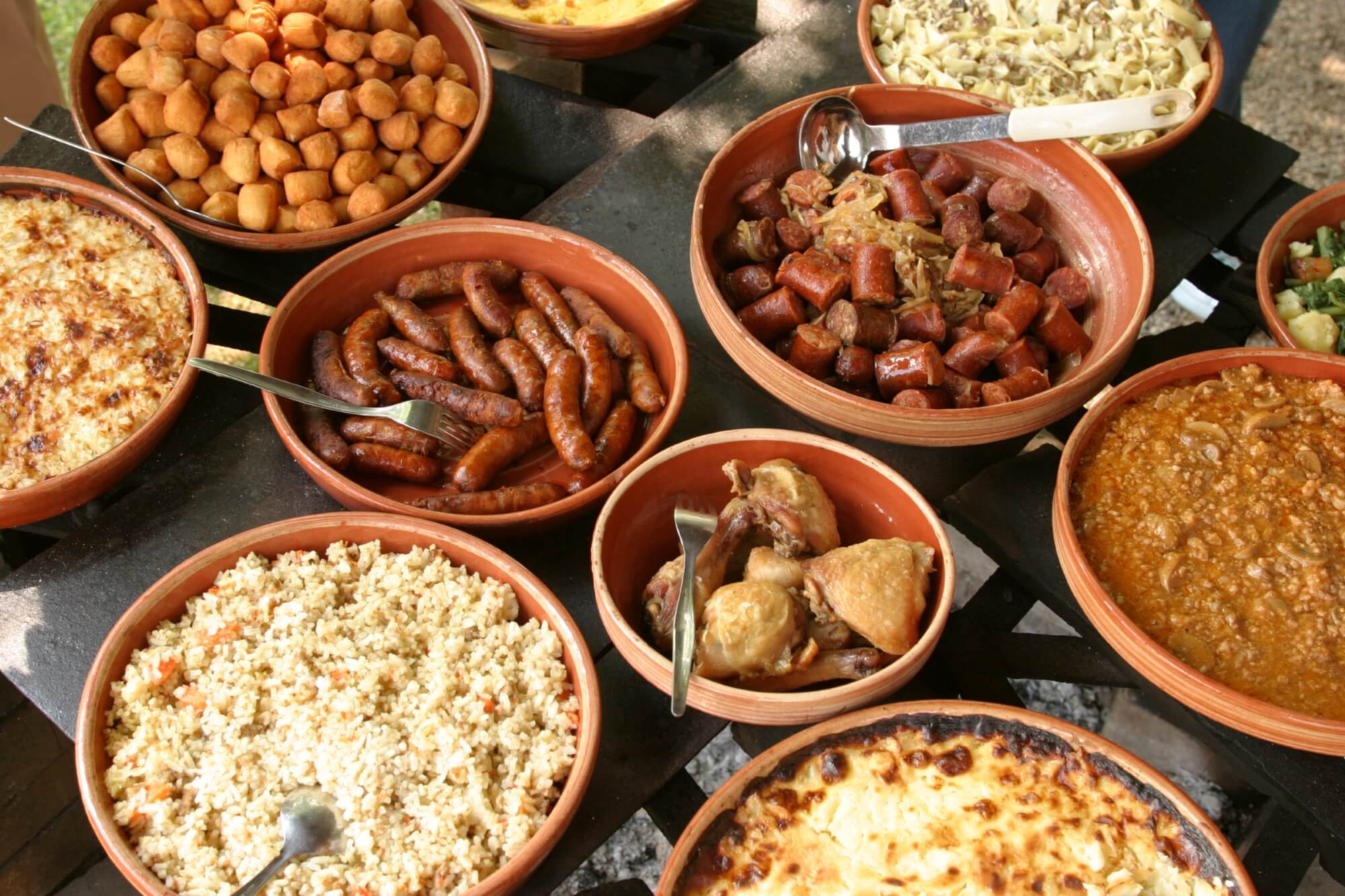 Selection of food from a Slavonian village © Mario Romulić
Selection of food from a Slavonian village © Mario Romulić
What is so rewarding about Croatian Seoski Tourism that international visitors would want to go to a traditional farm in some inland village instead of lying on the beach in Dalmatia for 14 days?
People come because they really want to see a different side of Croatia. And, there are many different aspects of Croatia to discover – not just Seoski Tourism, but also National Parks and Nature Parks. All of our current trends show us that more and more tourists are willing to come inland from the coast or to explore a different part of Croatia – inland Istria, for example, or continental Croatia.
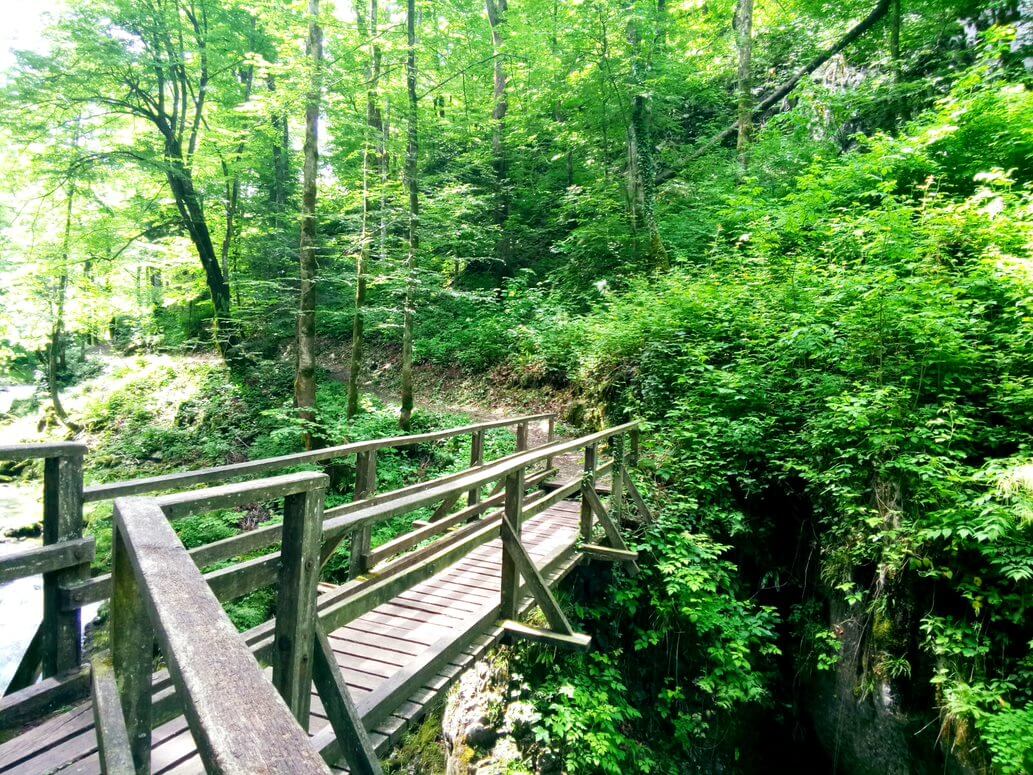 Kamačnik river canyon © Aleksandra Kuratko Pani
Kamačnik river canyon © Aleksandra Kuratko Pani
They really want to try authentic, local food. They want to eat healthy, to know what they are eating and how it is made. And, they want to experience flavours that are different from the usual ones they get from the supermarket.
 Traditional Međimurje table at Etno restaurant Međimurski dvori
Traditional Međimurje table at Etno restaurant Međimurski dvori
Also, I would say that with Seoski Tourism, people get to know better an authentic version of Croatia and its culture. It's a story we hear very often from our members. Some of them are visited by large groups from cruisers. These are people who might be on a cruise on the Adriatic and who journey inland for a day trip. Or, it might be a group who are cruising the Danube and disembark to visit a family farm in Slavonia, Baranja or Srijem.
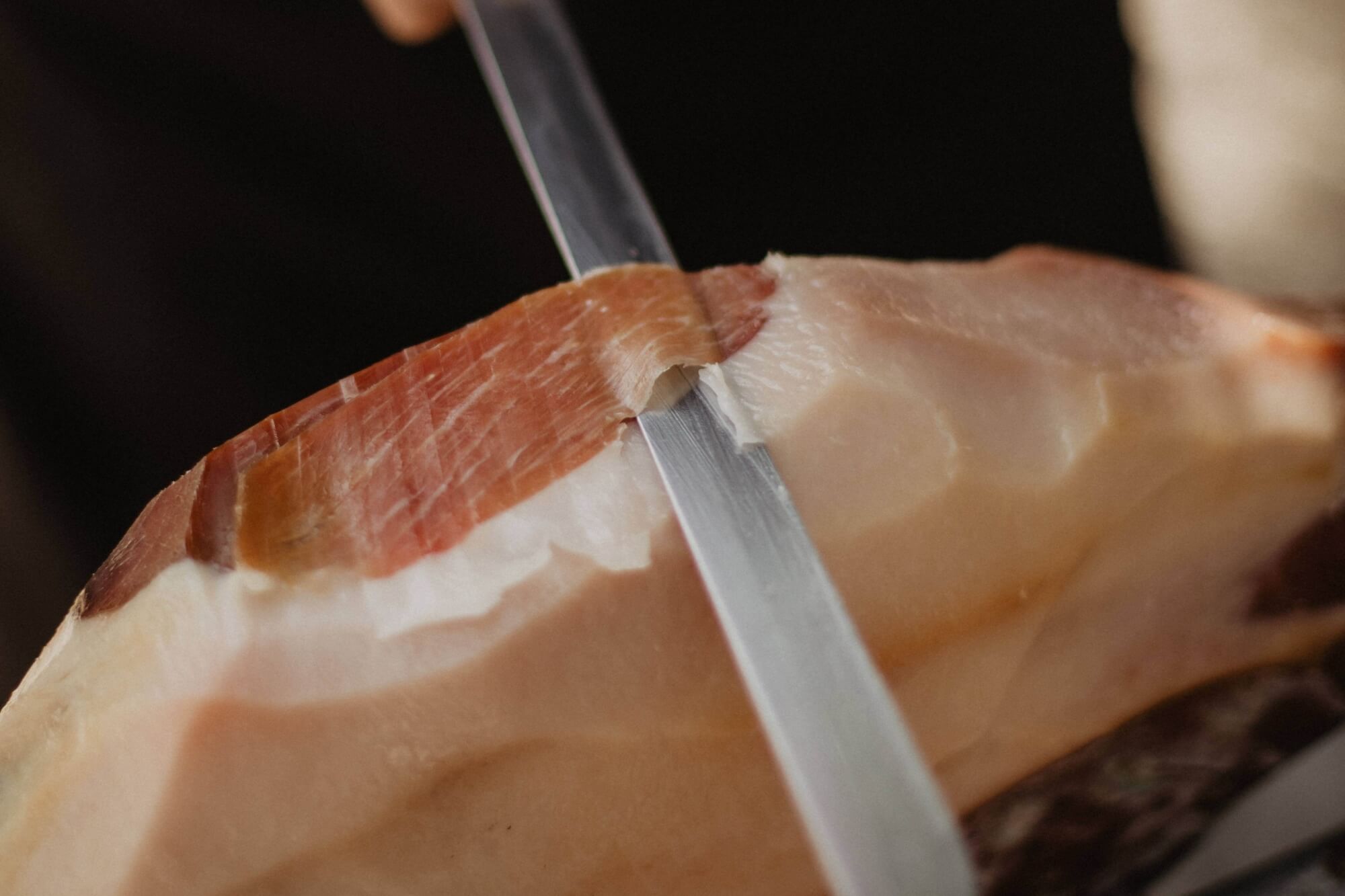 Prosciutto from Drniš at Agrotourism Kalpić © Ivana Kalpić
Prosciutto from Drniš at Agrotourism Kalpić © Ivana Kalpić
When they visit farming estates on day trips, it's very often a huge 'wow' moment for them. For many, in their minds, Croatia is simply sun and sea. And that's not entirely their fault. We, as a country, have done very little until now to promote alternative sides of Croatia. The visitors experience these wow moments because of the hospitality they receive and because of the tangible aspect of the visit. This is a modern aspect – people want to touch things, know how things feel, taste, smell. They want to ride on horses or feed them. Or take part in cultural activities. These parts of a visit to Seoski Tourism are very difficult to experience anywhere else.
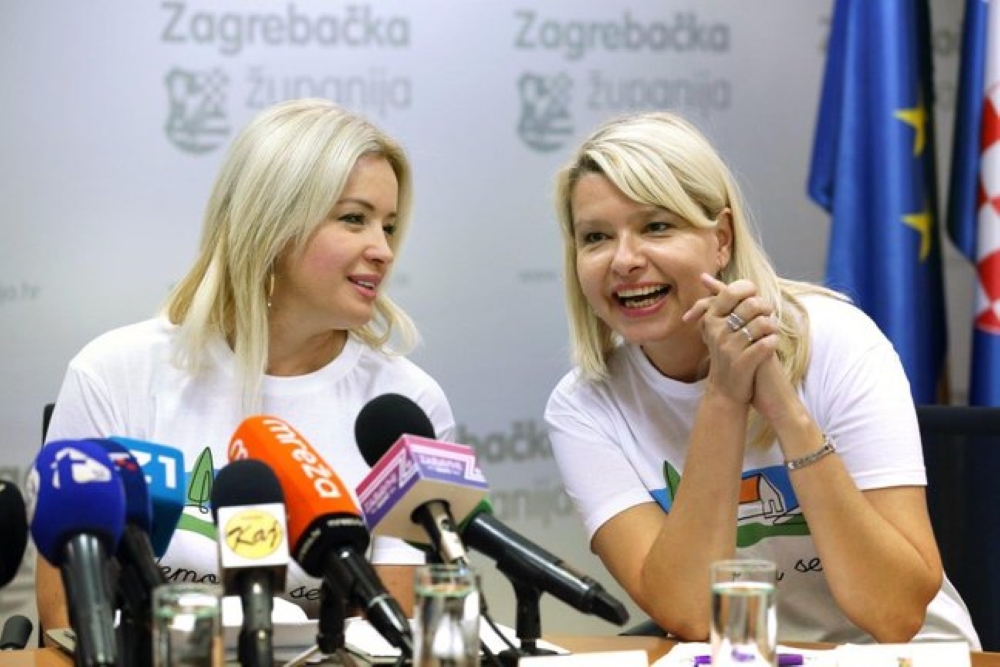 (left) Ivana Alilović, director of Zagreb County Tourist Board (right) Aleksandra Kuratko, secretary of Udruga ruralnog turizma Hrvatske (Croatian Rural Tourism Association) © Zagreb County
(left) Ivana Alilović, director of Zagreb County Tourist Board (right) Aleksandra Kuratko, secretary of Udruga ruralnog turizma Hrvatske (Croatian Rural Tourism Association) © Zagreb County
Udruga ruralnog turizma Hrvatske's online Seoski Tourism workshops begin today and their physical workshops continue next week in Istria.
If you'd like to read more about rural tourism in Croatia, then look here
Grabovača Cave Becomes the First Cave for Speleotherapy in Croatia
October 15, 2021 - Respiratory therapies within caves, called speleotherapy, have thousands of years of practice dating back to the times of the ancient Greeks and Romans. Now, for the first time, the first cave for speleotherapy in Croatia has been opened in Grabovača Cave Park.
Although Croatia is rich in caves, which are in large numbers in the tourist offer, there was no speleotherapy until last week, reports Turističke Priče. Namely, for the first time in Croatia, in the Grabovača Cave Park, a cave for speleotherapy is being opened. Last week, on the premises of the Institution, the Agreement on granting a concession approval for Medina Cave was signed. The concession approval was granted to the trade "SIGA" from Perušić.
Speleotherapy is a type of respiratory therapy that involves breathing inside a cave. The benefits of this type of therapy were known as far back as ancient Greece and Rome, and modern use began in Germany.
The history of modern speleotherapy dates back to the fifties of the last century. At that time, speleotherapy hospitals were established in several countries of Eastern and Central Europe. In its classical form, speleotherapy was the use of underground minerals and hot springs.
The goal, as they say from the Grabovača Cave Park, is to encourage as long a stay in nature and caves as possible, ie to combine speleotherapy with educational content in the Park area, and to contribute to better promotion of the area. The official opening will be soon, and the interested public will be informed about everything.
By the way, the Grabovača Cave Park is the only cave park in Europe and is located in the area of the Perušić Municipality in Lika. Water enriched with dissolved carbon dioxide with its mechanical and chemical power destroyed and dissolved carbonate rocks on the surface of the relief and in the depths of the Grabovača underground. Thus, countless ravines, oysters, sinkholes were formed on the surface and many pits and caves in the underground.
On a relatively small area of only 1.5 square kilometers, there are eight caves and one pit, which is a set of diverse and rich in calcite formations valuable speleological phenomena, and a quarter of the total number of protected speleological objects in Croatia - five caves are protected in the category of geomorphological monuments nature, and the cave Samograd is the most famous speleological object of this cave park and the only cave that is open to visitors.
For more on travel in Croatia, follow TCN's dedicated page.
Potential of Hydropower Tourism in Lika
August 25, 2021 - Is hydropower tourism in Lika the next big thing for the region? A closer look.
In my article about the Lika region, I mentioned that a large hydropower plant is under construction in Kosinj. Total Croatia News has also reported about the project. As a matter of fact, the existing Senj Hydropower System (HES) will be upgraded. The project includes the construction of two new hydropower plants, one in Kosinj and one in Senj. As of August 2021, the estimated worth of the project is 3.4 billion KN. At the end of July 2021, the government declared the Kosinj Hydropower System (HES Kosinj) a strategic investment project.
Visualization of the hydropower plant in Kosinj
Author: Croatian National Power Company (Hrvatska Elektroprivreda, HEP)
Kosinj is a village located on the inland side of the Velebit, the mountain range that separates the inland from the Adriatic coast. The landscape is dominated by the fertile plains of the Lika river and the Bakovac stream. Kosinj lies within the Perušić municipality, which is located north of Gospić, the largest town in Lika. The travel distance to Gospić is around 15 minutes. As of 2021, the travel distance from Kosinj to Perušić is around 22 minutes. The existing roads are not in a very good condition. However, a new road will be built from Studenci, north of Perušić, to Sklope via Kosinj. Once completed, it will be much easier to travel through the Kosinj area. For those who are interested and who understand Croatian, there is a local YouTuber who covers all major projects and events in the Lika region. He uploads his material on his YouTube channel, TV Loki.
Currently, there are two hydropower plants within the HES. The first one opened in 1965, and is located outside Senj, on the Adriatic coast. The other one opened in 1970, and is located in Sklope, south of Kosinj. As a part of the project, the river was dammed. A nearby valley was filled with water and turned into an artificial lake, Kruščica (Kruščičko jezero). The Kosinj valley will also be turned into an artificial lake by the way.
With its crystal clear water and surrounded by forest-clad mountains, the Kruščica lake has the potential to become a popular tourist attraction.
The Kruščica lake
Author: Croatian Tourist Board (Hrvatska Turistička Zajednica, HTZ)
In the Croatian media, the upgrade of the HES is described as a ‘megaproject’. Indeed, the project is of utmost importance for this part of Croatia, for many reasons. As of 2021, the HES has a capacity of 238.5 MW and an annual generation of 1.15 TWh. Once upgraded, the capacity will increase to 656 MW and 1.5 TMw per year. There is also the water flow. Before the HES was built in the 1960s, severe floods were a recurring phenomenon in western Lika. In order to regulate the water flow, underground tunnels were built through the Velebit. Also, the Lika river was connected with the Bakovac stream. Thereby, excess water could be led away from the area. With the upgrade of the HES, the regulation of the water flow will become even more efficient. Moreover, the project will benefit the agricultural industry, which is on the rise in the Lika region.
Hydropower energy is not only a renewable energy source, it’s also cost-effective in comparison with other energy sources. In recent years, green ideas have become mainstream in Europe. The political elites have realized that eco-friendly is the future. Therefore, it’s very positive that the government declared the upgrade of the HES a strategic investment project. For, the upgrade of the HES is a major green investment. In addition to being an infrastructure project, it will also put Croatia on the eco-friendly map.
Sources
https://www.hep.hr/projects/hydropower-system-senj-2/2543
https://www.vecernji.hr/vijesti/pocela-realizacija-dva-megaprojekta-u-lici-investicija-vrijedna-cak-34-milijarde-kuna-1439280
https://www.24sata.hr/energetska-tranzicija/investicija-od-34-milijarde-kn-hep-ov-novi-megaprojekt-u-lici-722742
https://balkangreenenergynews.com/hep-invests-eur-450mn-in-mega-hydropower-projects-kosinj-senj/
https://visit-lika.com/en/page/the-lika-river-and-kruscica-lake
For more on lifestyle in Croatia, follow TCN's dedicated page.
10 Reasons to Visit Lika's Interesting Barac Caves in Spring
Located in the heart of Lika, the Barac caves are one of the many treats of this landlocked region often neglected in comparison with Istria, Dalmatia or Kvarner. Despite that, this area has been gaining more and more attention over recent years. Jutarnji List recently provided ten reasons to Croats as why they should visit the Barac caves in spring, and here at TCN, we don't see why they couldn't apply to our non-Croatian readers too. So, here are ten reasons to visit the Barać caves, according to Jutarnji List.
1.) The location is easy to get to
From the Croatian capital of Zagreb, you need to drive only 130 kilometres or, in other words, a little under two hours. The trip is a little bit longer if you come from Rijeka (170 kilometres) or Zadar (150 kilometres). Once you reach the village and municipality of Rakovice, you can easily follow the signs to the Barac caves.
2.) This destination is part of a world-renowned tourist offer
Located close to the oldest National Park in Croatia, Plitvička Jezera (Plitvice Lakes), the Barać caves are part of Lika's offer as a destination, which is placed in the top 100 sustainable destinations and the top 15 finalists.
3.) They're weekend trip perfection
The Barac caves are an excellent spot for a one-day field trip. Along with touring the caves, there are additional offers of hitchhike tracks, a children's playground, a picnic area, a badminton court, and more.
4.) They're just as perfect for active vacation lovers
With two nearby adrenaline parks, the ability to rent quads and bikes, as well as and organised cycling tours and horse-riding through the Plitvice valleys, there's no chance of you running out of things to do. With some pre-arrangements, you can also visit the Dolina Jelena (Deer Valley) ranch in town of Drežnik, where you can come close and even feed the deer there.
5.) It's for all ages
To enter the cave, there is a light 200 metre uphill stroll that doesn't require much of a physical effort. You can tour this area only accompanied by a guide whose interpretation and info is suitable for all ages.
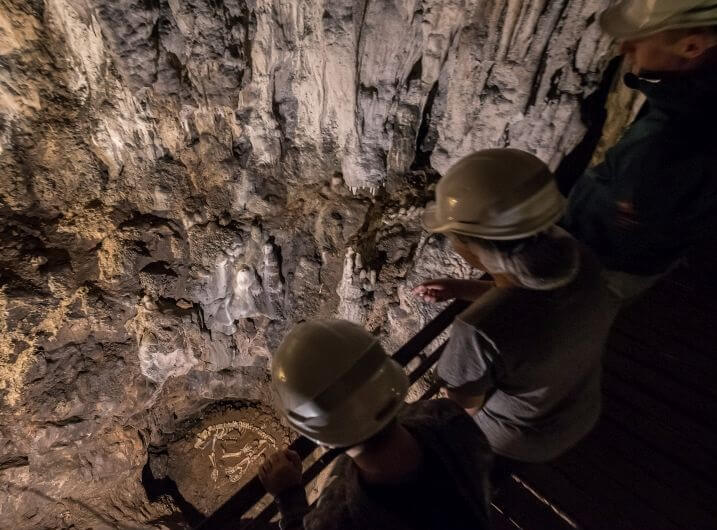
© Denis Stošić / Lika Destination
6.) It's the home of bats
Rhinolophus ferrumequinum and Rhinolophus hipposideros are two types of bats you can find in almost every auditorium of the upper Barac cave. And with the coming of spring, they're waking up and hunting bugs which is an excellent opportunity to learn more about them.
7.) Cave bear memorabilia
30.000 year old remnants of a cave bear are displayed within the Barac caves which is extremely rich in both archaeological and paleontologist findings with remains from the Ice Age all the way to the Middle Ages.
8.) Face your fear of the dark
The Barac caves are lit up, but you can also experience the cave in its natural ambient - in complete darkness with the sound of water drops. It's scary at first, but exciting and relaxing at second sight.
9.) An idividual approach
To organise an event it takes two adults who will be accompanied by a guide. Tickets don't need to be bought up-front, and the guy welcomes you at the info counter. The tour is organised upon your arrival. Before arranging the tour, the guide will give you some basic information before you purchase a ticket, and the tour lasts for about 60 minutes.
10.) Happy customers
Tripadvisor awarded Lika's stunning Barac caves with the ''Travellers choice'' title meaning they're among the top 10 percent of the best destinations on Tripadvisor and are constantly receiving new and excellent reviews. Google also awarded the Barac caves with a rating of 4.7/5 and Facebook gave them a 5/5.
For more about travel in Croatia, follow TCN's dedicated page.
Nikola Tesla Returns To Gospić After 30 Years
August 22, 2020 – After being destroyed in the war, the famous statue of genius Nikola Tesla will finally return to his home town
Following a 30 year absence, the famous statue of Nikola Tesla will be returned to his home town of Gospić. The original Tesla monument that once stood in the central town square, created by Croatian sculptor Frano Kršinić, was blown up during the 1990s Homeland War.
Gospić mayor Karlo Starčević today signed a contract approving construction works for the renovation of the square in front of the Gospić Culture Information Centre, where the Nikola Tesla statue will be placed. The contract is worth about HRK 1.8 million.
The location where the monument will stand is planned as a quiet area with several benches and gravel footpaths. The statue is an exact replica of the one previously lost to Gospić. Copies of this statue currently reside outside the School of Electrical Engineering section of Belgrade University and on the American side of Niagara Falls (main picture).
Nikola Tesla is honoured on both sides of Niagara Falls. This is his statue on the Canadian side © Milan Suvajac
An inventor and hugely innovative engineer, Nikola Tesla is best known for pioneering the alternating current (AC) electricity supply system. AC enables electricity to be provided safely to every home, street and business today. Tesla was born in 1856 in the village of Smiljan, in Lika, just six kilometres from Gospić.
In 1862, his family moved to Gospić where Tesla's father worked as an Orthodox parish priest. Nikola Tesla himself was supposed to follow his father and his mother's father into the Orthodox priesthood. Thankfully, he did not. In 1870, Nikola Tesla moved to nearby Karlovac to attend the Higher Real Gymnasium. A new Nikola Tesla exhibition centre is currently being built there, next door to the place of his former studies.
After Karlovac, Nikola Tesla continued his studies in Austria, and then spent some time teaching and working in Hungary. He eventually got a job working for Thomas Edison's company in Paris. While there, his incredibly innovative work was soon noticed and he was invited to go and work for the company in America.
Nikola Tesla, pictured before his work in America © State Archives
Thomas Edison - also a pioneering inventor - is frequently cited as one of the most innovative figures in the development of electricity supply. However, Edison was adamant that direct current (DC) would be the best way to distribute electricity. The DC system he championed was in direct competition to that proposed by his one-time employee, Tesla. Despite Edison's wealth and power, the DC system he fought hard to impose proved to be impractical and unsafe. Instead, the AC distribution design, perfected by Tesla, became the standard supply system that the world uses today.
Nikola Tesla stayed in America for the rest of his life and continued to create countless pioneering inventions. He worked within the fields of early x-rays, wireless power supply, electromagnetic radiation and radio waves, before his death in 1943. In the years since he died, interest in the enigmatic Nikola Tesla has only grown.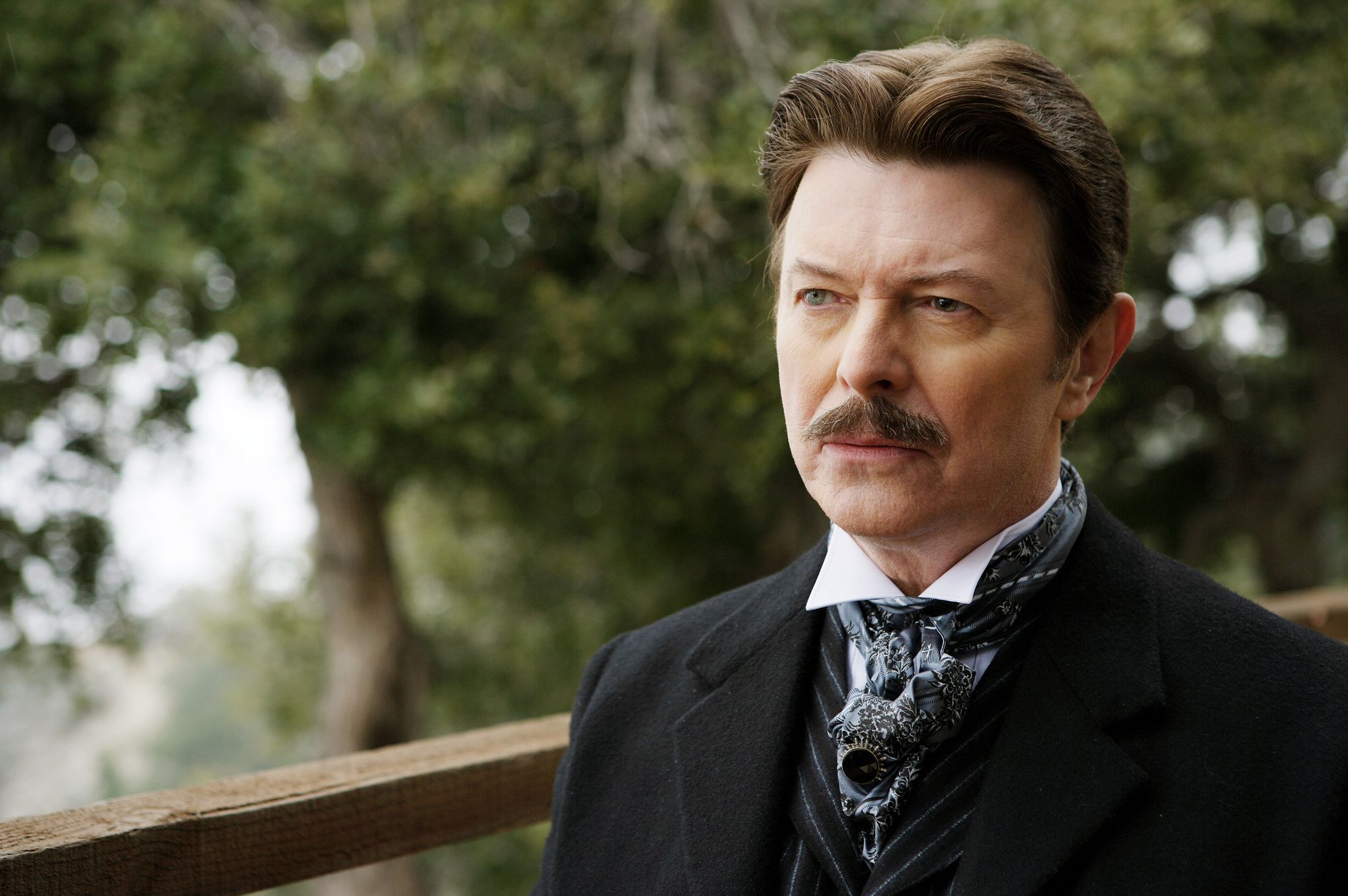
David Bowie playing Nikola Tesla in Christoper Nolan's 2006 movie The Prestige © Warner Brothers
A mystique continues to surround him, not least because many of his wondrous ideas remain unrealised. Nikola Tesla has been portrayed in film by Nicholas Hoult and David Bowie (the latter, famously, in Christopher Nolan's The Prestige). The national airport in Belgrade, Serbia is named after him, as is Serbia's largest power plant. In Croatia, over 130 streets are named after Nikola Tesla.
Paths Following Footsteps of Wolves, Lynxes and Bears Opened Near Plitvice
As Poslovni Dnevnik writes on the 31st of July, 2020, many tourists visiting the much loved Plitvice area have a brand new, very interesting tourist attraction at their disposal - the ability to hike along trails that follow the footsteps of wolves, bears and lynxes.
This area is rich in both flora and fauna, and by tracing the footsteps of animals, visitors will be able to get a unique insight into the activities of Lika's large wild animals.
This is a protected area managed by the Barac Caves Public Institution, and in addition to adventurers and animal lovers, this offer will certainly be interesting to walkers, recreationists, nature lovers and Nordic walkers.
"Back when we initially came to this idea and began with the arrangement of the trails, we had the visitors to Barac's caves in mind, to whom we offer additional, very attractive things to do before or after the tour of the cave itself. Going deep into the forest and following in the footsteps of wild animals is something that you will definitely remember for the rest of your life and that will connect you with nature forever,'' says director Tihana Ostrina.
The trails close to Plitvice are circular in shape, with a total length spanning 11.5 kilometres, with markings in the shape of paws, they are additionally marked with signposts at important intersections, and the start and finish is at the Barac caves picnic area.
The wolf trail is the shortest and the tour takes only twenty minutes to walk, so it is also suitable for novice walkers. Wolves, as well as humans, like to move in their "pack", and to trace this path it was necessary to follow the wolves who live in the area very closely.
The lynx trail is three kilometres long and follows in the footsteps of the Eurasian lynx, which is an endangered mammal species in Croatia. Large areas are needed and used for lynxes, and in that sense it is one of the most demanding and challenging species for conservation, and its presence is a sign of excellent preservation of the ecosystem. The movement of lynxes was recorded in the area of Barac's caves, and visitors to the new trail near Plitvice can discover the uniqueness of the forest ecosystem in which the lynx finds his occasional refuge.
The bear trail is designed for eager walkers who like a challenge and who have at least three hours at their disposal, as it is 7.5 kilometres long. The trail follows in the footsteps of the gorgeous brown bear, the giant of Croatia's mountain forests, the trail also hides some of the most beautiful lookouts and even naturally occurring refreshments from several forest springs and streams.
The new trails located close to the much loved Plitvice area of Lika pass through a larger complex of mixed forest that offers a home to a large number of plant and animal species. They also stretch over dry and semi-dry grasslands that represent important habitats for many rare and endangered plant and animal species. Due to the unfortunate abandonment of the traditional way of management, many mountain grasslands are disappearing due to the gradual overgrowing of woody and shrub species from nearby forests and are among the most endangered ecosystems in Croatia.
Visitors are invited to choose the trail according to their physical fitness level, to bring adequate footwear and clothing, and follow in the footsteps of some of Croatia's most majestic large animals.
For more, follow our travel page.
Croatia's Green Heart: Explore Beautiful Lika for Less Until September
Unfortunately, Lika continues to be a part of Croatia that most only get to see when driving through it, either from Zagreb down to the coast or back again. This gorgeous part of the country is lush and green, full of rolling hills and picturesque little towns and villages and even more history and nature.
Known for much more than just Lika potatoes and lamb (although they're both entirely worthy of their fame), Croatia's green heart has never particularly been associated with tourism, which is dominated by the coast, until somewhat recently. With the coronavirus pandemic having forced us into a ''new normal'' in which Croatia's strongest economic branch, tourism, is suffering, why not explore Lika for less?
As Lucija Spiljak/Poslovni Dnevnik writes on the 8th of June, 2020, more than half of the territory of Lika is located in the ecological protected network of EU Natura 2000.
This gorgeous part of Croatia and its numerous attractions will be even more accessible to visitors until the end of September this year, with benefits they can take advantage of by presenting a ticket for the famous Plitvice Lakes National Park.
They announced this from the national park itself and stated that kayaking on the Gacka river will be 35 percent cheaper, the cost of electric bike rental around Plitvice Lakes will be slashed by 30 percent, the price of quad safaris through the Gacka Valley and Velebit will be cut by 25 percent, there will be a 15 percent discount on the use of zip lines, and much more.
As the director of the Plitvice Lakes National Park, Tomislav Kovacevic, explained, this is all part of the destination project called Plitvice Experience in Lika, within the scope of which they decided to combine numerous opportunities for active tourism, and Kovacevic referred to the initiative as ''one of the best tourist-cultural-landscape-historical adventures in the Republic of Croatia''.
In addition to kayaking, rowing, exploring the flora and fauna of beautiful Lika and quad biking through the Gacka Valley and Velebit, a tour of the airplane museum and much more will be organised.
As previously touched on, more than half of the territory of Lika is located in the ecological protected network of EU Natura 2000, which unites the national parks of Plitvice Lakes, Northern Velebit and Paklenica, the Velebit Nature Park and many more stunning areas in Lika within a special biosphere reserve, along with its wild variety of natural phenomena.
The move rightfully brands Lika as a destination full of protected areas, where more than fifty species of different (medicinal) plants grow freely, and Lika food products are labelled as being of Lika quality.
For more, follow our travel page.


